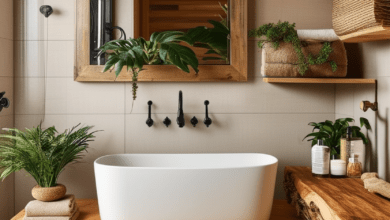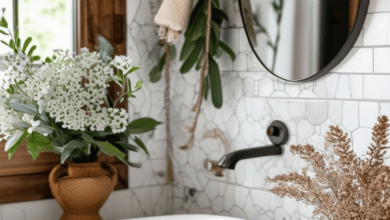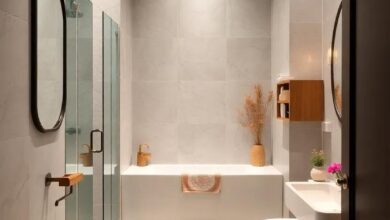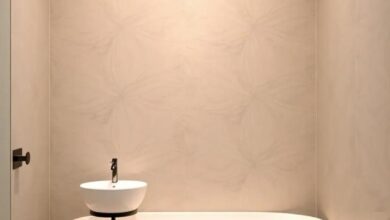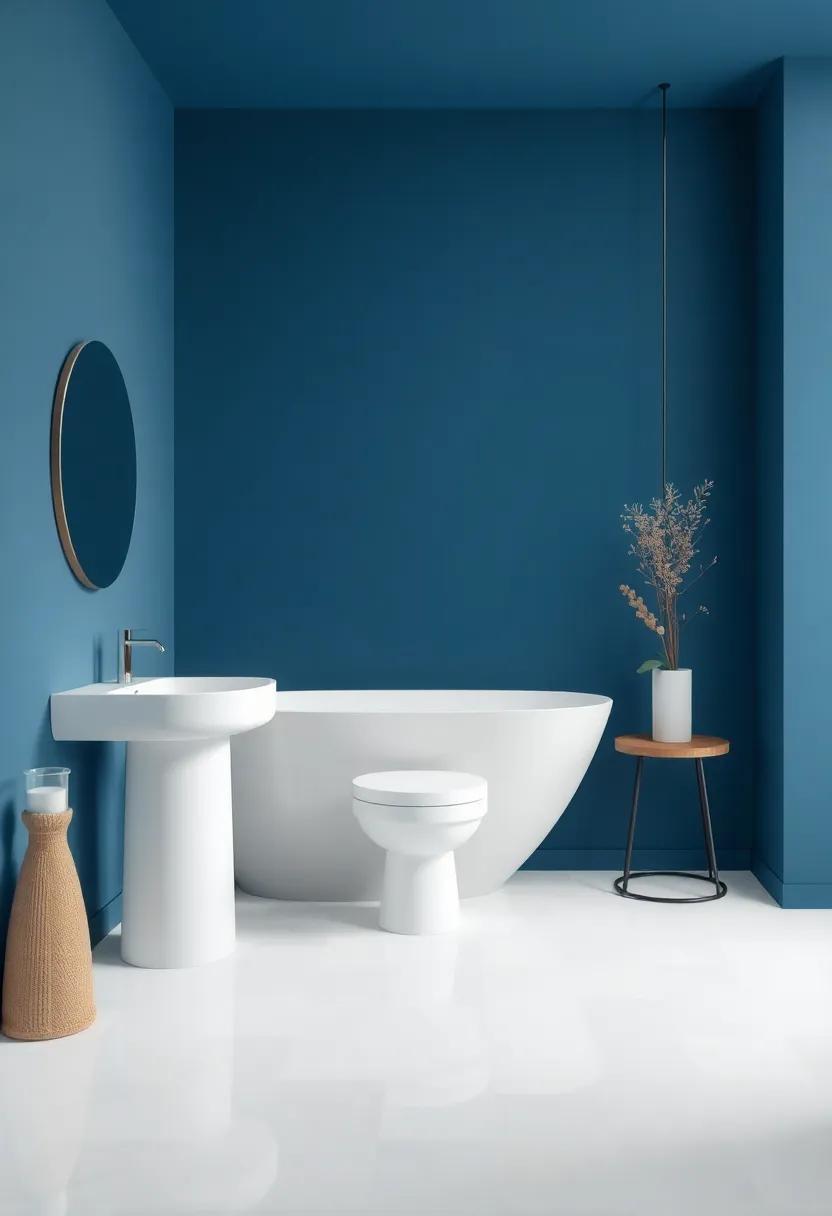
Transform Your Space: The Impact of Color in Bathroom Design Choices
In the realm of interior design, every room tells a story—each space imbued with it’s own unique atmosphere and character. Among these, the bathroom ofen gets overlooked as merely a functional area, yet it holds astounding potential for change. Imagine stepping into a sanctuary that not onyl meets your daily needs but also envelops you in a soothing embrace, inviting relaxation and reflection. At the heart of this transformative experience lies color—a powerful tool that can elevate your bathroom from mundane to magnificent.In this article, we will explore how thoughtful color choices can redefine your bathroom, setting the stage for a truly refreshing ambiance. Whether you’re seeking tranquility, energy, or a touch of elegance, the right palette can make all the difference in creating a space that resonates with your personal style and fosters well-being. join us as we delve into the psychology of color, the latest design trends, and practical tips for harnessing the emotional power of hues in your bathroom makeovers.
Transforming Small Spaces With Bold Colors That Captivate and Create Illusion of Size
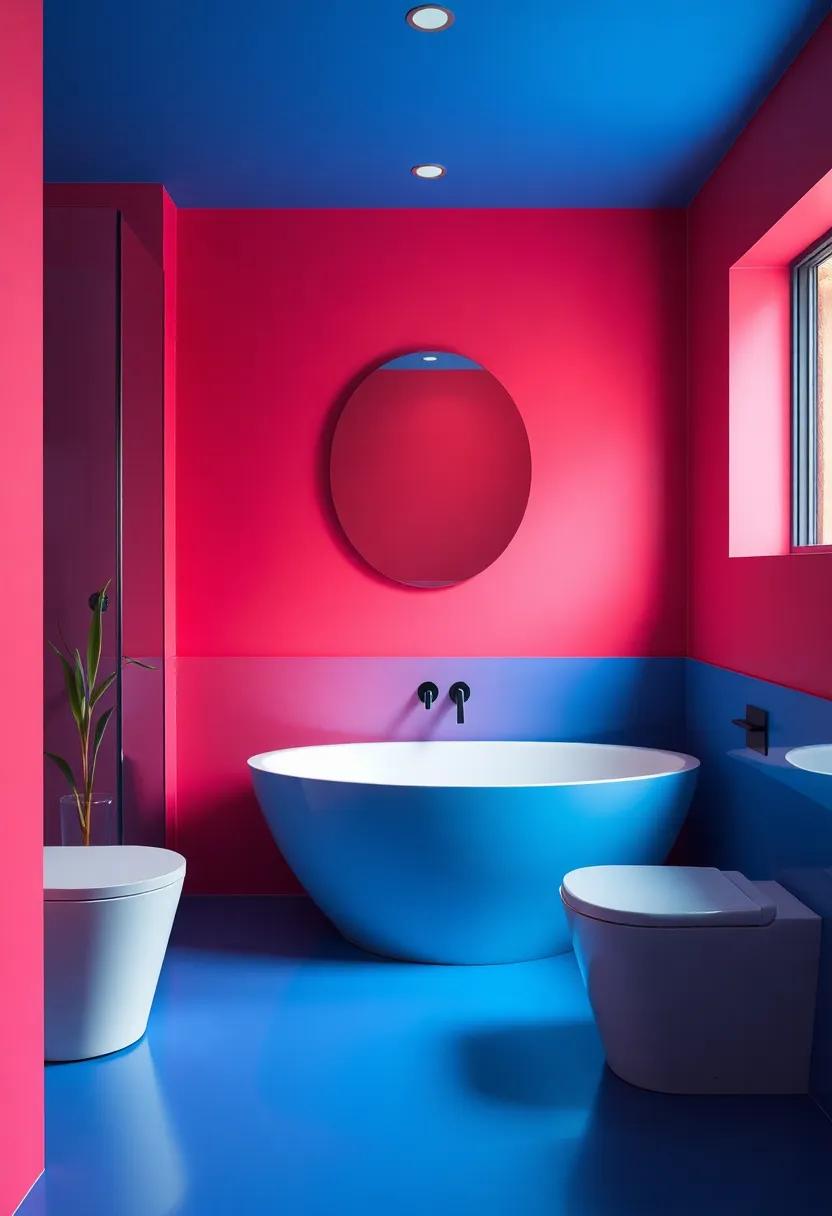
When it comes to transforming small bathrooms, the strategic use of bold colors can work wonders in creating an illusion of space while bringing a vibrant touch to your design. Rich hues like deep navy, emerald green, or even striking burgundy can add a layer of sophistication while simultaneously expanding the perceived dimensions of the room. Utilizing these colors on an accent wall or cabinetry can beautifully contrast against lighter tones, enhancing both depth and character. Consider this approach for:
- Accent walls: Use a bold color to draw the eye and create focal points.
- Cabinets and vanities: Add a pop of color for visual interest without overwhelming the space.
- Accessories: Incorporate bold colors in towels, rugs, or decor items to keep the design dynamic.
Additionally, carefully selected color combinations can amplify natural light, making the space feel more open and inviting. Light colors, especially when paired with glossy finishes, reflect light more effectively, creating a luminous atmosphere. By balancing these reflective tones with bold accents, you craft a harmonious yet striking bathroom surroundings. Consider the following popular color pairings that can invigorate small spaces:
| Base Color | Accent Color | Effect |
|---|---|---|
| Soft Grey | Vibrant Teal | Calm yet energizing |
| Creamy White | Bold Charcoal | Elegant contrast |
| pale Peach | Rich Plum | Warm and inviting |
Calming Neutrals: Creating a spa-Like Atmosphere With Soft Color Palettes

To create a serene sanctuary in your bathroom, embracing soothing colors is essential. Soft hues such as taupe, soft gray, beige, and muted pastels work harmoniously together, establishing a tranquil environment that encourages relaxation. Integrating these calming shades can instantly transform your space, encouraging a sense of peace reminiscent of a luxurious spa. By using a combination of these colors on walls, tiles, and accessories, you can enhance the feeling of openness and light, which is vital in a smaller bathroom. Consider incorporating elements like natural wood accents and soft linens in complementary tones to further enrich the atmosphere.
Effective use of color can also be reflected in the selection of fixtures and finishes. Choosing materials with a soft sheen, such as brushed nickel or matte white, can subtly elevate the overall aesthetic while remaining unobtrusive. Here’s a simple guide to help you visualize the impact of color in your space:
| Color | Effect | Suggested Combinations |
|---|---|---|
| Soft Gray | Creates an airy and spacious feel | With white fixtures |
| Warm beige | Adds warmth and coziness | With natural wood elements |
| Pale Blue | Promotes calm and tranquility | With soft whites and greens |
By thoughtfully selecting your color palette, you can craft a space that not only looks inviting but also feels rejuvenating. Simple accessories such as candles in soft neutral shades or textured soaps can accentuate your chosen theme while enhancing the overall spa-like atmosphere. In every detail, aim for tranquility, ensuring that every element contributes to a cohesive, serene environment perfect for unwinding after a long day.
Energizing Accents: Harnessing vibrant Hues for a Lively Bathroom Experience
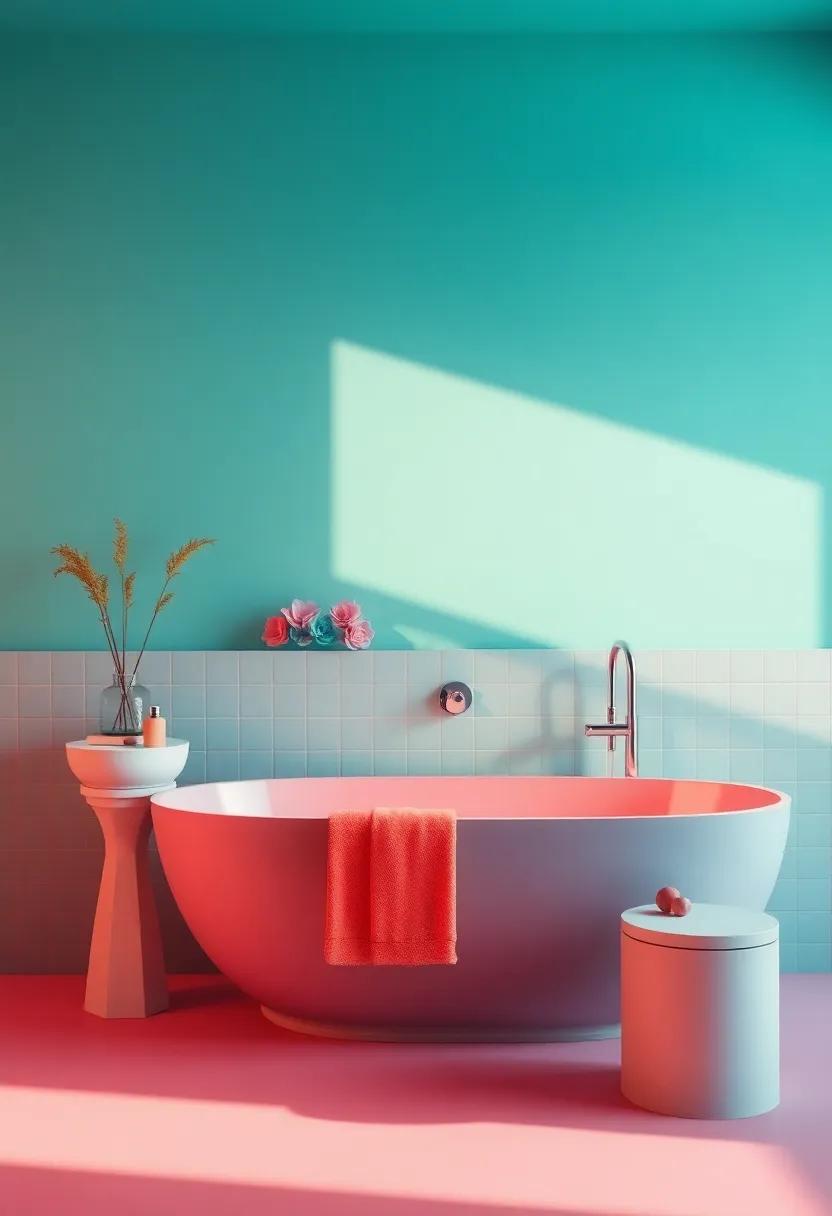
Introducing vibrant colors into your bathroom can instantly elevate the atmosphere, creating a refreshing and invigorating environment. Bold hues, such as electric blue, sunny yellow, or vibrant coral, can transform an ordinary space into a lively oasis. Consider using these colors in accent walls or decor elements such as towels, shower curtains, and accessories. This thoughtful infusion of color can not only energize your daily routines but also foster a sense of joy and creativity every time you step into the space.
To achieve a harmonious balance, pair vibrant shades with neutral tones to create a backdrop that allows the lively colors to shine. Textures and patterns play a critical role in enhancing this colorful narrative. Incorporate elements like patterned tiles,colorful fixtures,or playful artwork to add layers of interest. Here’s a quick reference table to identify color combinations that work well together:
| Accent Color | complementary Neutral |
|---|---|
| Electric Blue | Soft Gray |
| Sunny Yellow | White |
| Coral | Beige |
| Mint Green | Charcoal |
By strategically positioning these vibrant accents against neutral backgrounds, you create visual appeal while also making the space feel more expansive and inviting. Remember, a little color can go a long way, turning your bathroom into a personal retreat brimming with life and energy.
Timeless Elegance: The Role of Classic Color Schemes in Bathroom Design
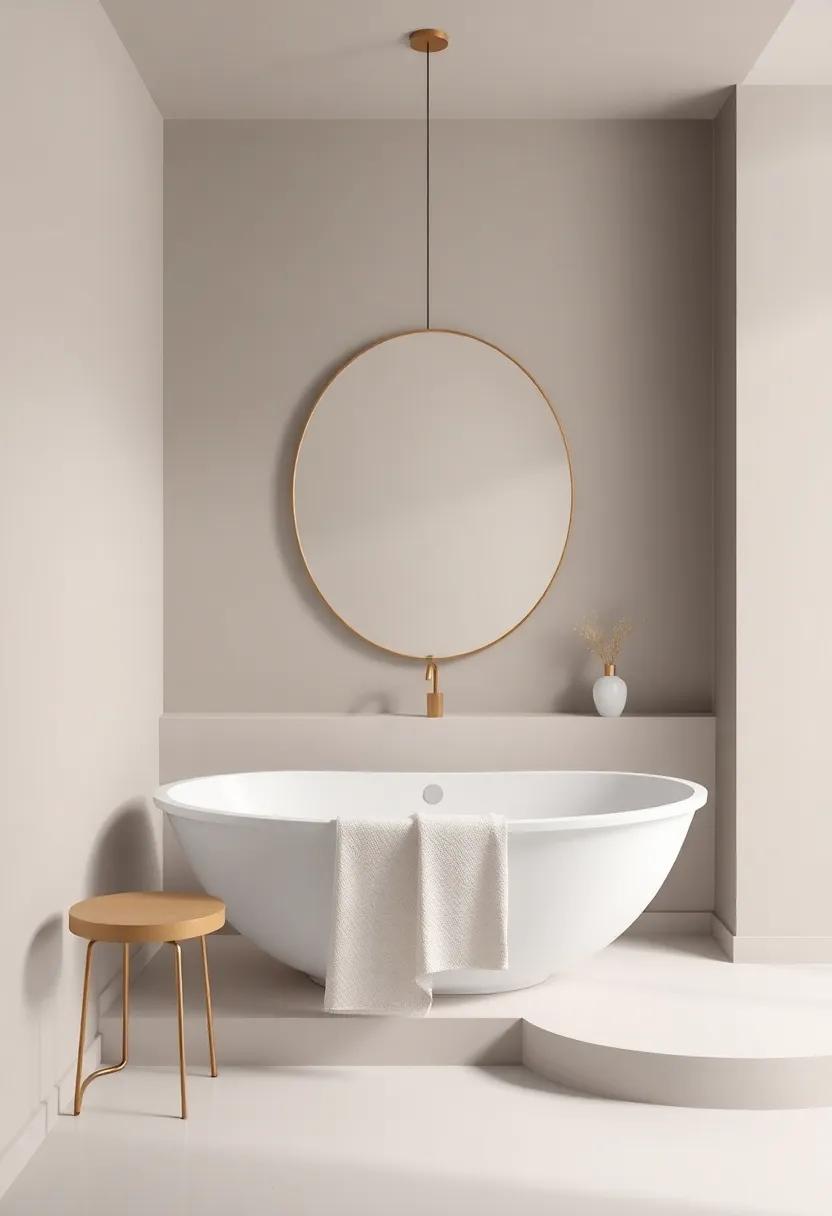
Incorporating a classic color scheme in bathroom design not only enhances the aesthetic appeal but also creates a sense of tranquility and timelessness.Shades like soft whites, gentle beiges, and muted grays serve as the perfect canvas for an elegant bathroom. By integrating these hues, one can achieve a look that feels both refined and inviting, allowing for versatility whether in conventional or contemporary settings. adding elements of warmth with subtle accents can further elevate the ambiance, creating a cohesive and serene space.
To complement these classic colors, consider incorporating textures and materials that enhance their impact. A few suggestions include:
- Marble countertops that convey luxury
- Subway tile backsplashes for a timeless feel
- Brushed nickel fixtures for a modern twist
Combining these elements will help in creating a harmonious balance, ensuring that the bathroom remains both functional and visually appealing.To illustrate the effectiveness of different shades, the table below highlights popular color combinations that resonate well with classic themes:
| Color pairing | Vibe Created |
|---|---|
| Soft White & Navy Blue | Elegant Contrast |
| Light Gray & Charcoal | Modern Sophistication |
| Beige & Sage Green | Warm Serenity |
Nature-Inspired Colors That Bring freshness and Tranquility to Your Bathroom
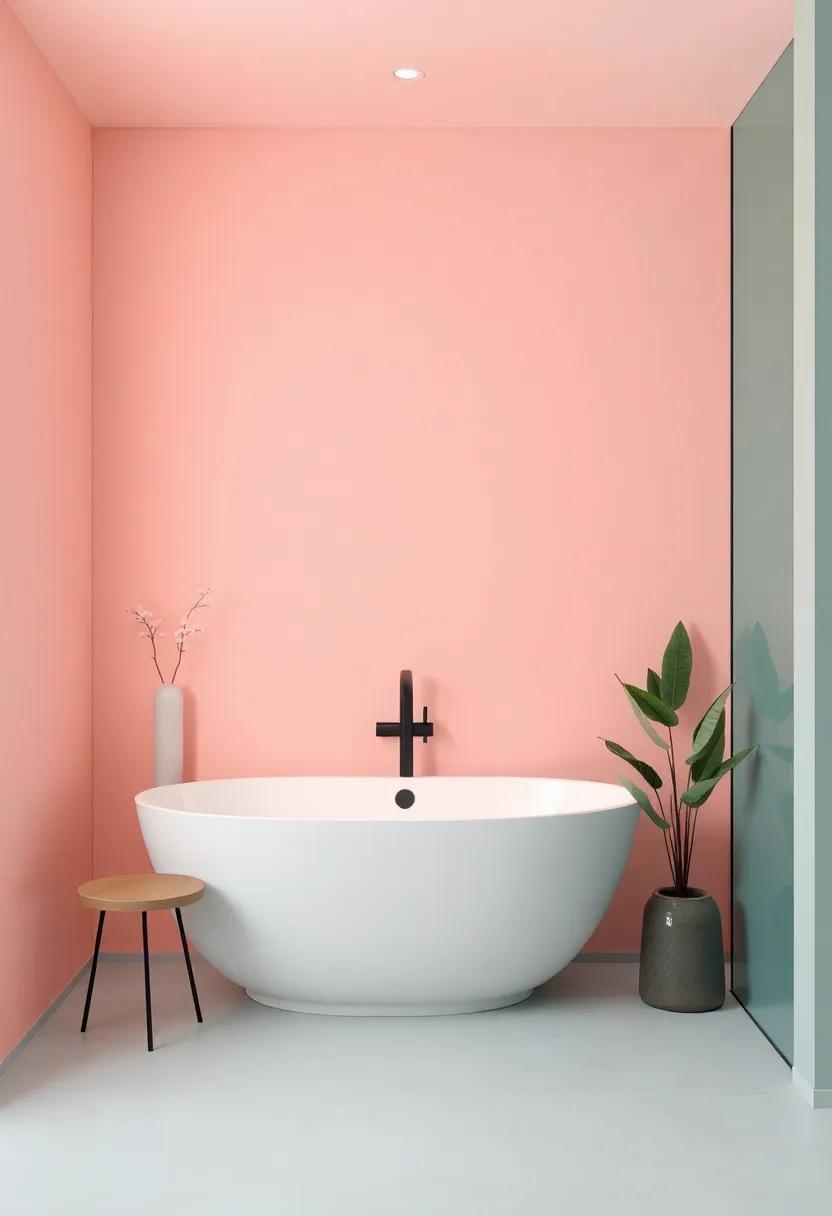
When designing a bathroom, the choice of color can evoke feelings of calmness and renewal, drawing inspiration from the serene beauty of the natural world. Consider incorporating hues like soft greens, reminiscent of lush foliage, which can create a refreshing and rejuvenating atmosphere. Shades such as sky blue or gentle aquamarine capture the essence of serene waters, invoking tranquility and a soothing vibe that makes every bath feel like a retreat. additionally, earthy tones such as warm taupe or muted terracotta can ground the space, reminding you of natural elements like stone and clay, promoting an overall sense of harmony.
To enhance the natural inspiration in your bathroom, you can mix and match colors for an organized yet organic palette. Use the following combinations to create a cohesive and fresh environment:
- Soft Green + Cream: A light and airy feel.
- Sky Blue + White: A crisp and clean vibe.
- Earthy taupe + Deep Olive: A warm, inviting atmosphere.
- Muted Terracotta + Light Beige: A natural, grounded aesthetic.
Here’s a quick comparison of how different nature-inspired colors impact the overall feel of your bathroom:
| Color | Effect |
|---|---|
| Soft Greens | Refreshing and rejuvenating |
| Sky Blue | Calming and serene |
| Earthy Tones | Grounding and harmonious |
| Muted Colors | Subtle and sophisticated |
Choosing the Right Finish: How Color sheen Influences Mood and Aesthetics
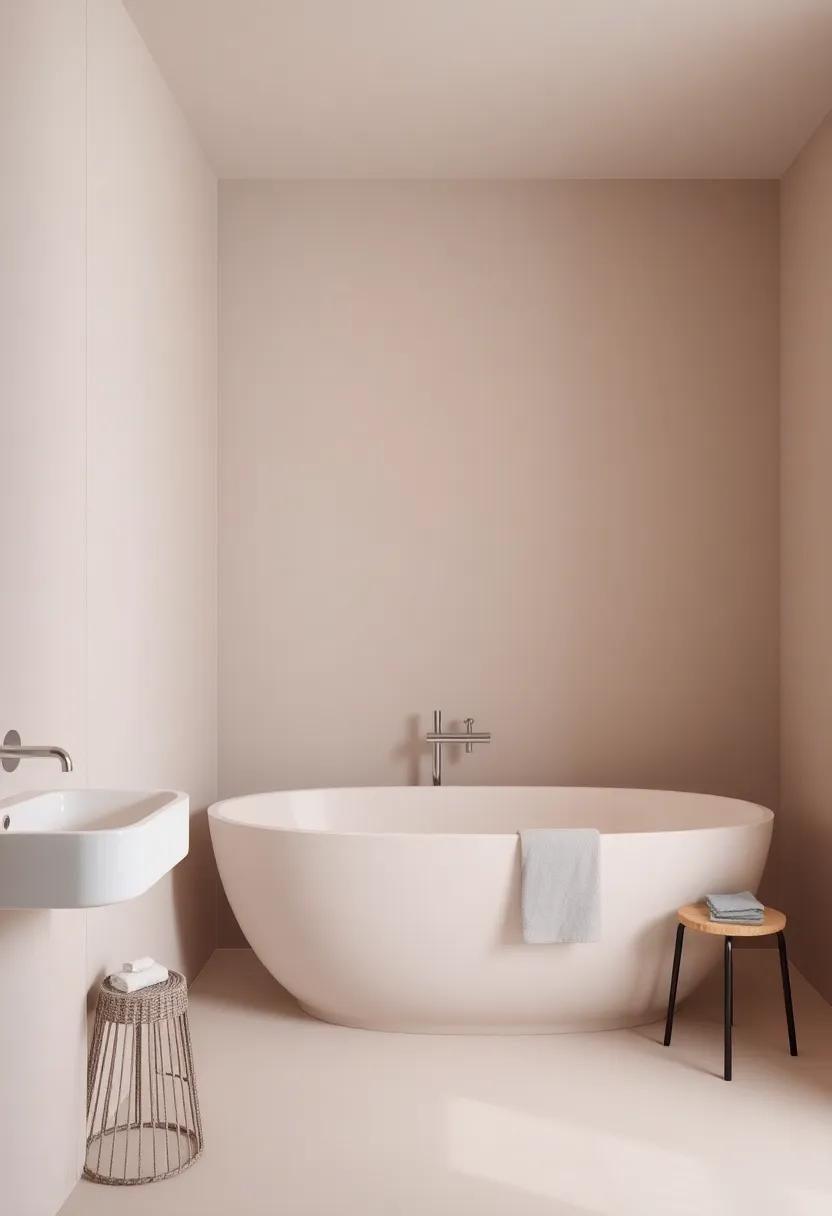
When transforming your bathroom, the choice of finish can greatly enhance both the aesthetics and mood of the space. Different sheens can create varied effects, affecting how light interacts with color and how the overall atmosphere feels. As an example, matte finishes provide a soft, subtle look, ideal for creating a serene and spa-like environment.In contrast, glossy finishes reflect light, which can make a small bathroom feel larger and more vibrant. Choosing the right sheen not only influences the visual appeal but also contributes to the bathroom’s functionality, particularly in areas prone to moisture and wear.
Consider the following options when selecting the appropriate finish for your bathroom:
- Matte: Great for a calm and sophisticated vibe.
- Satin: Offers a balance between matte and glossy, making it versatile and easy to clean.
- Eggshell: Provides a subtle sheen, perfect for a warm and inviting atmosphere.
- Glossy: Adds drama; excellent for highlighting architectural features or artistic tiles.
To illustrate the impact of different finishes on light reflection and mood, consider the following table:
| Finish Type | Light Reflection | Ideal Mood |
|---|---|---|
| Matte | Low | Calm and Cozy |
| Satin | Medium | Balanced and Inviting |
| Glossy | High | Vibrant and Energetic |
Each finish brings its unique character to your bathroom design; hence, understanding their properties can lead to choices that not only beautify your space but also provide the desired emotional response. With careful consideration of color sheen, you can create a bathroom that reflects your personal style while promoting well-being.
The Psychology of Color: Understanding Emotions Evoked by Bathroom Shades
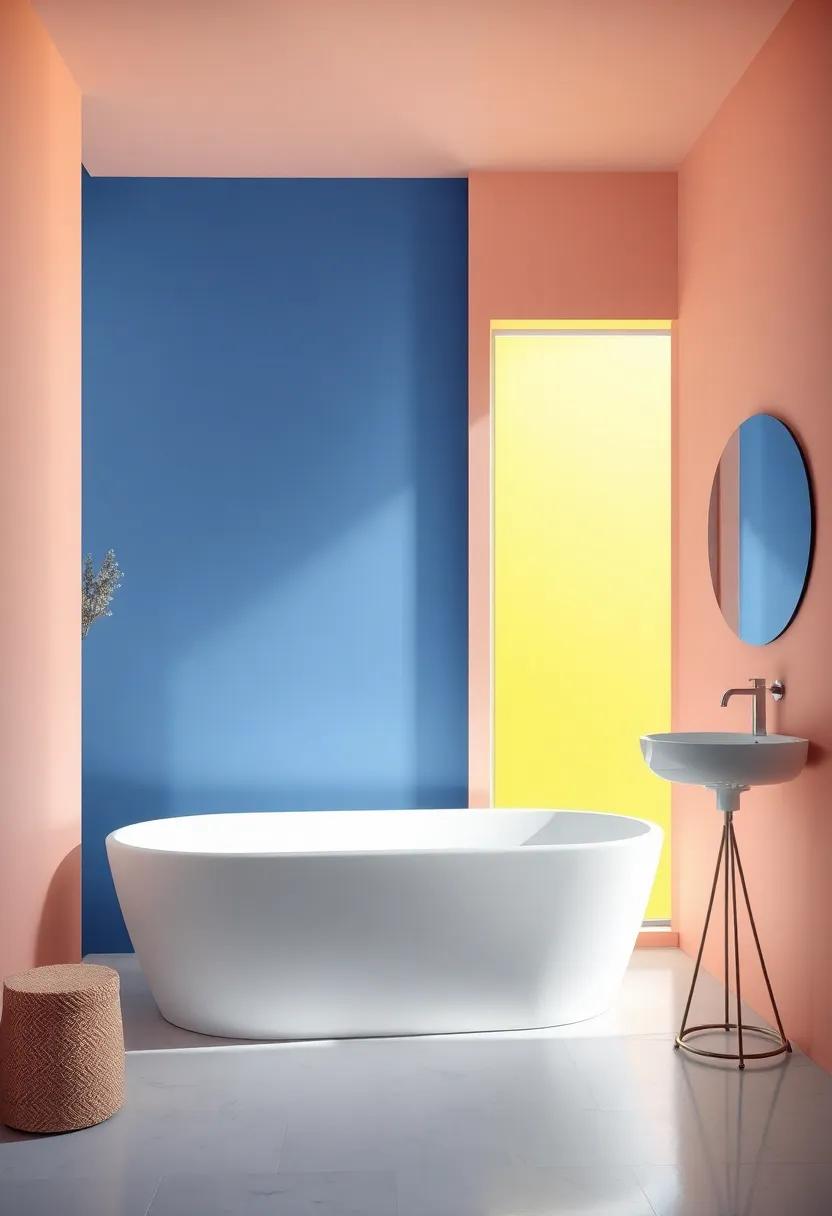
The colors you choose for your bathroom can profoundly influence your mood and emotional well-being. Different hues evoke specific feelings and can alter perceptions of space. For instance, blue is often associated with tranquility and calmness, making it a popular choice for creating a serene spa-like environment. Alternatively, green symbolizes renewal and balance, which can foster a refreshing atmosphere. Shades like soft pink can introduce warmth and comfort, ideal for spaces meant for unwinding. By understanding these connections, you can tailor your bathroom’s palette to align with your personal needs and desired emotional responses.
When selecting colors, it’s meaningful to consider the balance of brightness and saturation.Light tones, such as pastels, can make a small bathroom feel more airy and spacious, while darker shades may add depth and intimate character to larger spaces. Here are some popular color emotions to keep in mind:
- White – Purity and simplicity
- Gray – Sophistication and neutrality
- Yellow – Happiness and energy
- Purple – Luxury and creativity
To better visualize the impact of various shades, consider the following table of emotional associations:
| Color | Emotional Effect |
|---|---|
| Blue | Calmness and relaxation |
| Green | Balance and harmony |
| Pink | Warmth and comfort |
| Yellow | Cheerfulness and energy |
Contrast and Harmony: Balancing Bold and Subtle Colors for Visual Impact
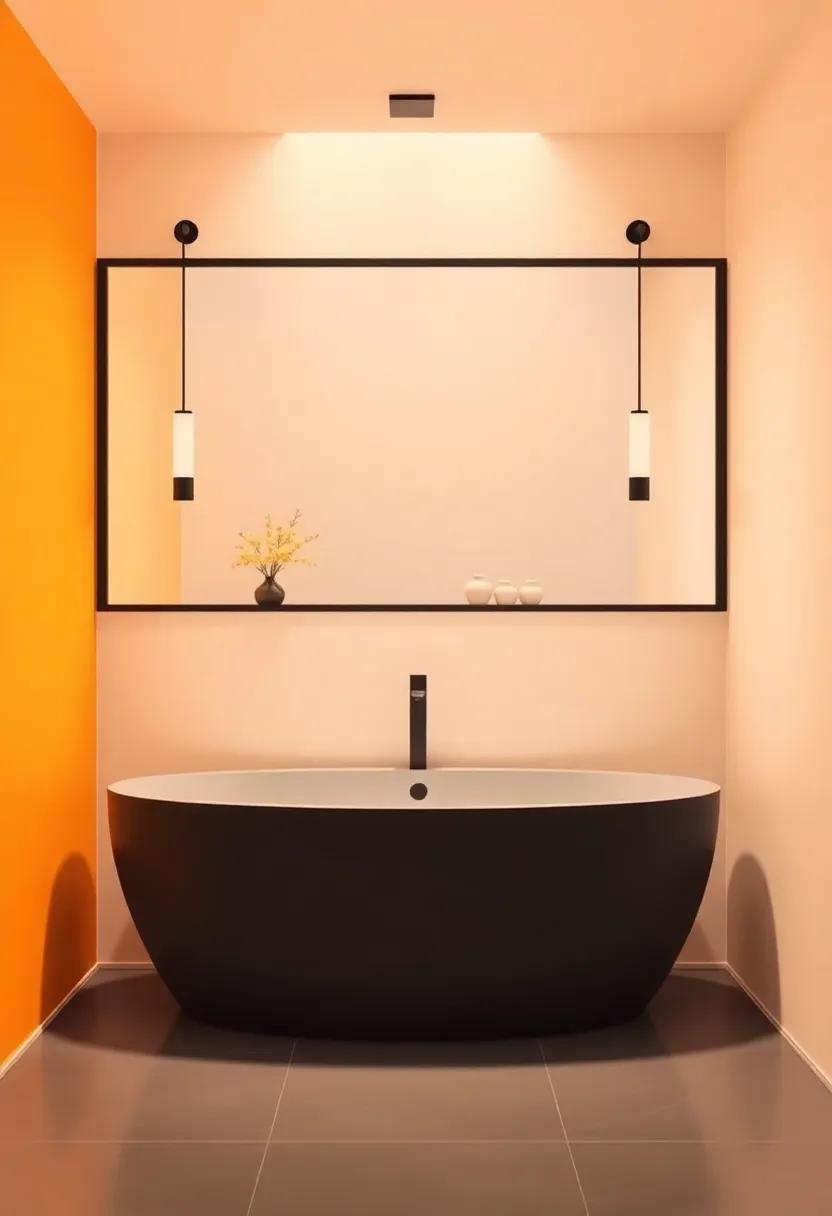
In the realm of bathroom design, the interplay between bold and subtle colors can create a visual narrative that is both striking and soothing. Choosing a vibrant accent such as a deep emerald green or a rich cobalt blue can serve as a focal point against softer hues like pale gray or warm beige. This balance not only draws the eye but also evokes a sense of depth and dimension. By using bold colors intentionally,perhaps on an accent wall or decorative feature,you create a layered aesthetic that engages without overwhelming. Consider complementary combinations for added intrigue, such as pairing mustard yellow with soft lavender to achieve a playful yet harmonious look.
To enhance this concept, one can utilize various techniques to ensure that the overall palette feels unified.Incorporating neutral elements—like white fixtures or wooden textures—can ground the space and provide visual stability. Using a color wheel can illuminate effective strategies for pairing shades that yield maximum impact while maintaining balance. Below is a simple table illustrating color pairings that evoke either calmness or vibrancy,helping you make informed decisions for your bathroom bliss:
| Color Pairing | Visual Effect |
|---|---|
| Deep Blue & Soft White | Serene elegance,promotes relaxation |
| Coral & Light Aqua | Playful energy,invigorating vibe |
| Charcoal & Blush | Modern chic,adds sophistication |
| Mustard Yellow & Pale Gray | Warmth complemented by coolness |
Seasonal Shifts: Adapting Bathroom Colors to Reflect the Changing Seasons
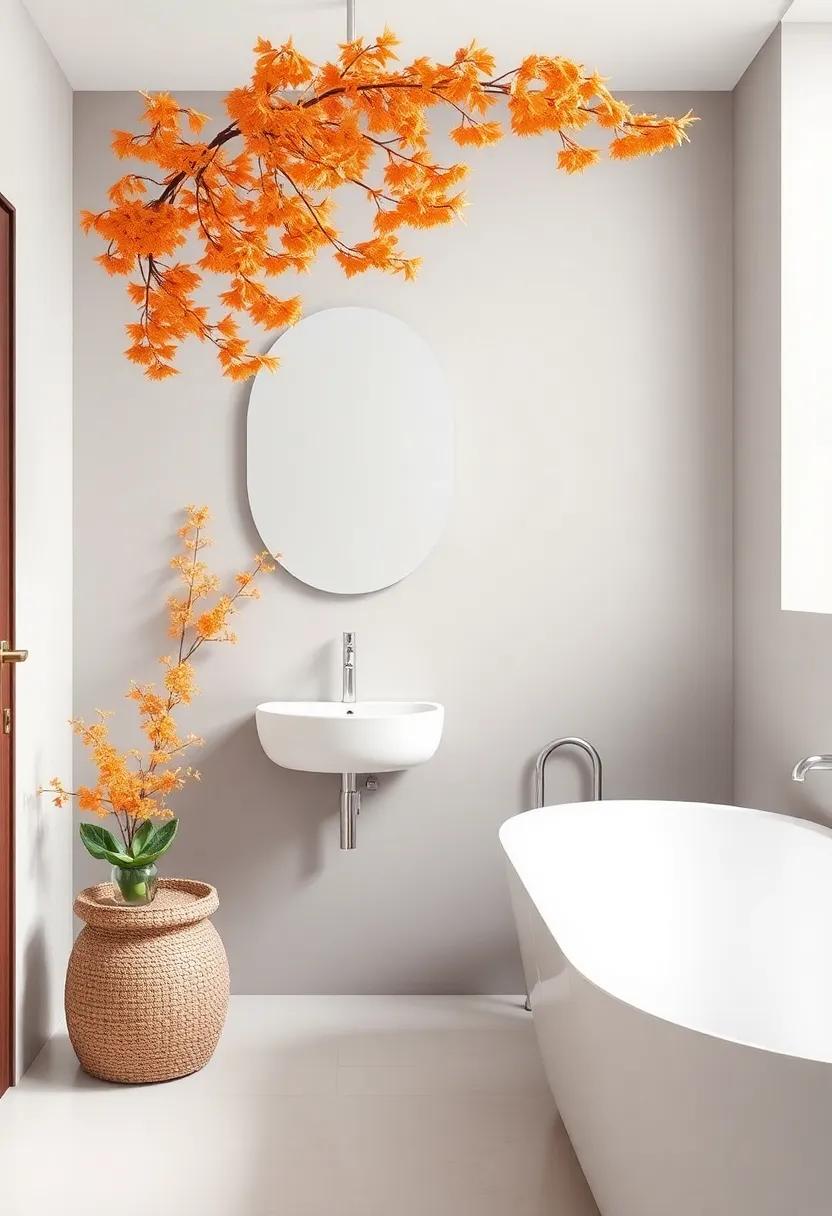
Just as the leaves change colors and the air gets crisper, your bathroom can benefit from a seasonal makeover that reflects the beauty of each transition.Embracing hues that resonate with the essence of the season can invigorate your space. For spring, consider soft pastels like mint green, blush pink, or sky blue to evoke a fresh, airy feel. In contrast, summer might thrive with vibrant tones such as coral, turquoise, and bright yellow that energize and uplift the spirit. Autumn calls for deeper, rustic colors like burnt orange, mustard yellow, or deep burgundy that bring warmth, while winter could benefit from calming, cool shades such as icy blue, sage green, or classic charcoal to create a serene escape.
When reimagining your bathroom’s color palette, consider color pairings that reflect each season’s mood. You can create a cohesive look by using accents that highlight your chosen themes. Such as:
- Spring: Pair pastel tiles with floral prints.
- Summer: Bright colors accented with white or light wood fixtures.
- Autumn: Rich,warm shades highlighted by earth-toned accessories.
- Winter: Cool colors softened with gentle, warm lighting.
To help visualize your seasonal choices, consider the following table showcasing suggested color themes:
| Season | Primary Colors | Accents |
|---|---|---|
| Spring | Soft Pastels | Floral Prints |
| Summer | Vibrant Hues | White or Light Woods |
| Autumn | Earthy Tones | Wooden Accessories |
| Winter | Cool Shades | Warm Lighting |
Cohesive Color Schemes: Unifying Your Bathroom with Your Home’s Design
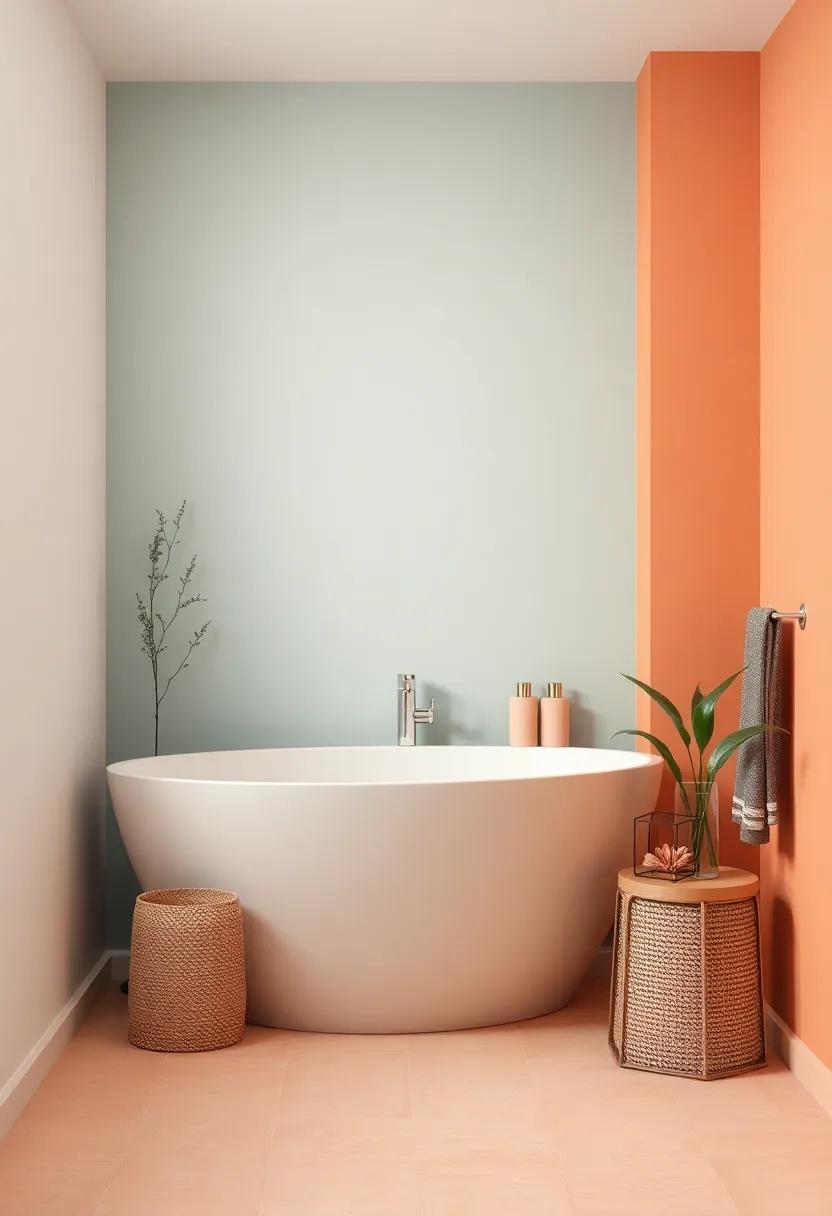
Creating a cohesive color scheme in your bathroom can significantly enhance not only its aesthetic appeal but also the overall harmony of your home. To achieve this, consider incorporating shades that seamlessly blend with the pre-existing palette of your living areas. Focus on colors that evoke a sense of serenity and cleanliness, such as soft blues or muted greens, which can be complemented by warmer neutrals like beige and taupe.Key elements to think about include:
- Wall Color: Choose a hue that resonates with your home’s primary color.
- Accessorizing: Incorporate towels, rugs, and decorations that echo the living space.
- Fixtures: select hardware and vanities in colors that tie back to other rooms.
Another essential aspect of this design approach is ensuring that every detail contributes to a unified look.Textures and materials play a crucial role; for instance,pairing glossy tiles with matte finishes can create depth while maintaining coherence. consider the following simple rules for consistency:
| Element | recommendation |
|---|---|
| Cabinetry | Match with the kitchen or living room cabinetry. |
| Countertops | Choose similar or complementary materials as seen in adjacent spaces. |
| Lighting | Opt for fixtures that share a style with your home’s decor. |
Accent Walls: Making a Statement With Color-Infused Focal Points
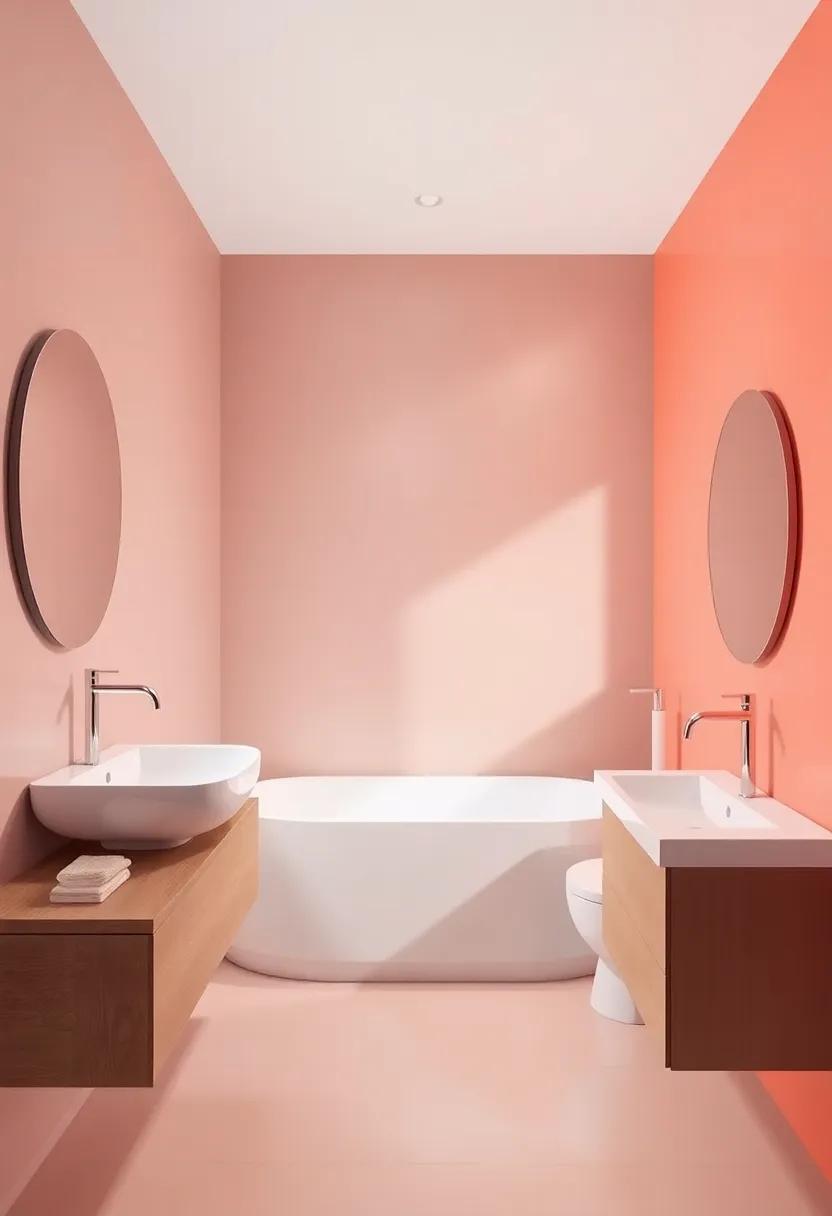
Creating an accent wall in your bathroom can dramatically influence the overall ambiance and style. By choosing a bold color or unique texture, you can draw attention to a specific area, transforming it into a focal point. Consider utilizing materials like shiplap, decorative tiles, or wallpapers to add depth and character. As an example, a deep navy blue behind the vanity can evoke a sense of tranquility, while vibrant yellows or greens can energize the space, making your mornings a little brighter. Don’t shy away from mixing finishes; pairing shiny tiles with matte paint can create a visually stimulating contrast that enhances the design.
When planning your accent wall, it’s essential to consider the natural light in your bathroom and also how the chosen color complements existing fixtures and decor. Here are some tips to keep in mind:
- Choose a color Scheme: Use a color wheel to find complementary shades that enhance your chosen hue.
- Test Samples: Always test paint or tile samples in the actual space before making a commitment.
- Balance the Design: Ensure the accent wall does not overwhelm the room; keep other elements muted.
- Accessorize Wisely: Use bathroom accessories that resonate with the accent color to create a cohesive look.
| Color | Effect |
|---|---|
| Deep Blue | Calm and Relaxing |
| Bright Yellow | energizing and Cheerful |
| Forest Green | Fresh and Natural |
| Soft Gray | Modern and Sophisticated |
Textures and Patterns: Layering Colors Through Innovative Surfaces
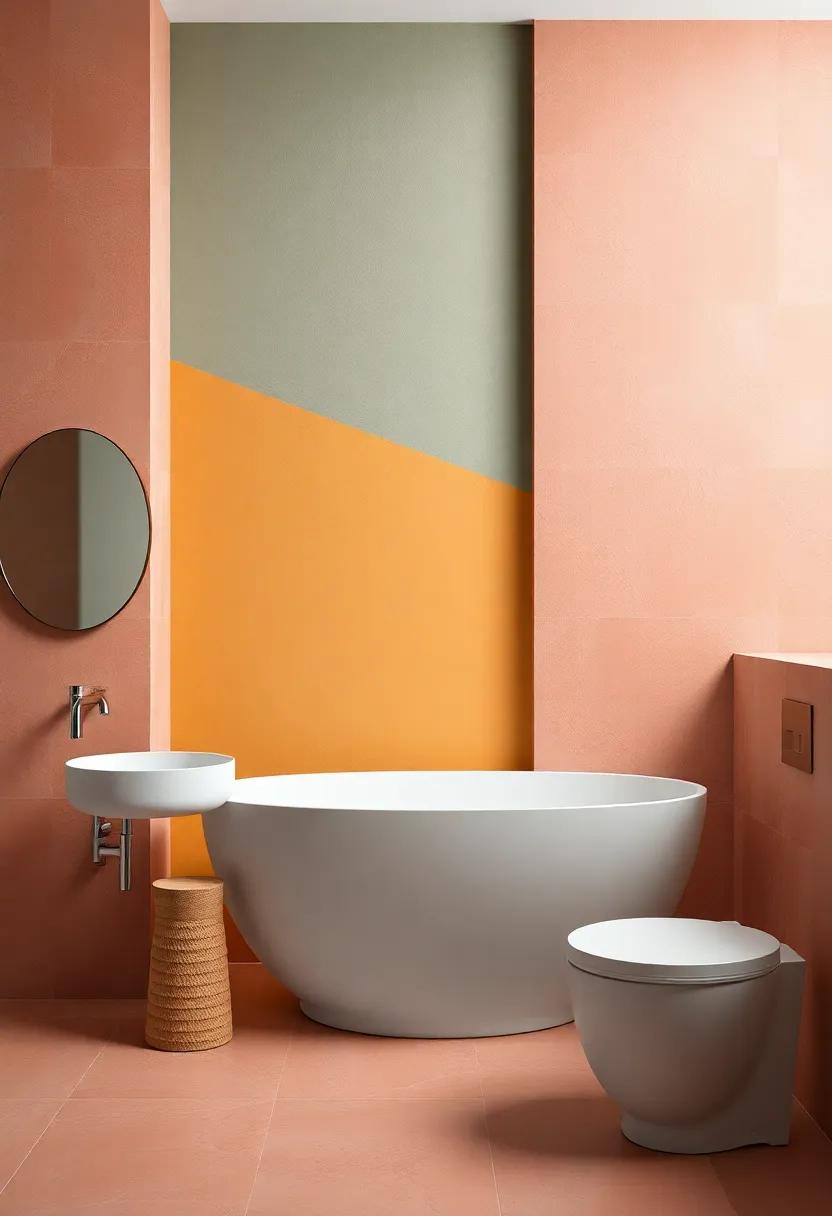
in the realm of bathroom design, the interplay between textures and patterns plays a pivotal role in evoking emotions and shaping aesthetics. The tactile quality of surfaces, from smooth ceramics to rough-hewn stone, invites interaction and draws the eyes toward a harmonious color layering. Consider surfaces that engage the senses, such as patterned tiles or plush textiles, which add not only visual interest but also depth to the color scheme. By merging different materials,you can create a seamless transition of hues while enhancing the overall design with innovative surfaces.
To achieve a vibrant yet balanced look, explore the use of complementary and contrasting patterns. Use textures strategically to highlight certain areas within your space. Some effective combinations include:
- Glossy Tiles paired with Matte Wall Paint
- Textured Wallpaper against a Minimalist shower Curtain
- Natural Stone juxtaposed with Sleek Fixtures
Below is a succinct table showcasing popular combinations that enhance color layering:
| Surface Texture | Color Palette | Design Impact |
|---|---|---|
| Polished Marble | Cool Blues and Greys | Luxurious and Soothing |
| Rough Tile | Earthy Tones | Warm and Inviting |
| Brushed Metal | Bold Reds and Whites | Modern and Dynamic |
Lighting Effects: How Different Light Sources Change Color Perception

When designing a bathroom, the choice of lighting is pivotal, as different light sources can dramatically alter the perception of color. As a notable example, natural daylight tends to project a true representation of colors, which is why it’s frequently enough recommended to assess paint samples under this light. In contrast, incandescent bulbs tend to cast a warm, yellowish hue, softening colors while enhancing earth tones, such as deep blues and greens. On the other hand, fluorescent lighting tends to impart a cooler, bluish tint, which can wash out warmer shades, making vibrant colors appear duller and less inviting.
To truly grasp how various light sources interact with color, consider the following characteristics:
- Incandescent: Warm light that enhances reds and yellows, creating a cozy atmosphere.
- Fluorescent: Cooler light that can emphasize greens and blues, frequently enough leading to a clinical feel.
- LED: versatile lighting available in different color temperatures, allowing for dynamic color changes depending on the bulb.
- Candlelight: Provides a soft, flickering glow that adds richness to colors, perfect for spa-like serenity.
An effective way to illustrate the influence of light on your chosen palette is by using a simple comparison table:
| Light Source | Color Temperature (Kelvin) | Color Perception |
|---|---|---|
| Incandescent | 2700K | Warm,inviting |
| Fluorescent | 4100K | Cool,harsh |
| LED | 3000K - 6000K | Adaptable,varied |
| Candlelight | 1800K | Soft,mellow |
Understanding how these lighting options interact with the colors in your space can definitely help you make informed decisions,ensuring your bathroom is not only gorgeous but also tailored to suit your desired mood and aesthetics.
Sustainable Choices: Eco-Friendly Colors for a Greener Bathroom Design
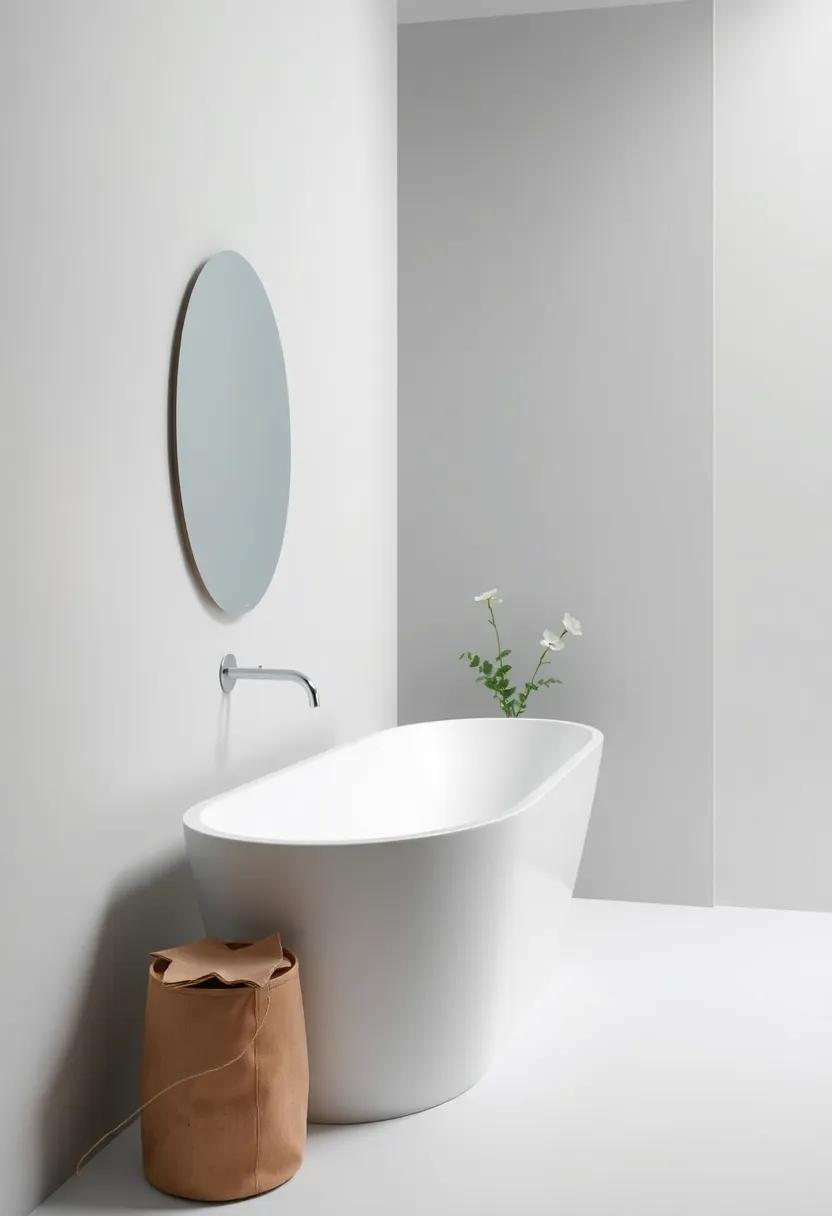
When redesigning your bathroom, the choice of color can significantly influence both aesthetic and environmental factors. Earthy tones like soft greens,muted browns,and delicate creams evoke a sense of calm and serenity while seamlessly blending with nature. Utilizing natural pigments in paints not only minimizes harmful chemicals—making the space healthier—but also supports eco-conscious manufacturing processes.Consider shades derived from natural elements, such as clay-based paints, which offer a rich texture and depth while reducing the carbon footprint associated with synthetic options.
Moreover, incorporating light-reflecting colors can enhance the brightness of your bathroom while reducing the need for electric lighting. Colors such as pale blues and gentle yellows can make small spaces feel larger and more inviting. To complement your eco-friendly color choices, consider materials sourced sustainably for tiles and fixtures. Check out the table below for a quick reference of color and material pairings that promote a greener bathroom design:
| Color | Material | Eco-Friendly feature |
|---|---|---|
| Soft Green | Cork Tiles | Renewable Resource |
| Pale Blue | Recycled Glass | Reduces Waste |
| Warm Beige | Bamboo Vanity | Sustainable Growth |
| Cloud White | Non-Toxic Paints | Low Emissions |
color Trends: Staying Ahead with the Latest in Bathroom Hue Inspirations
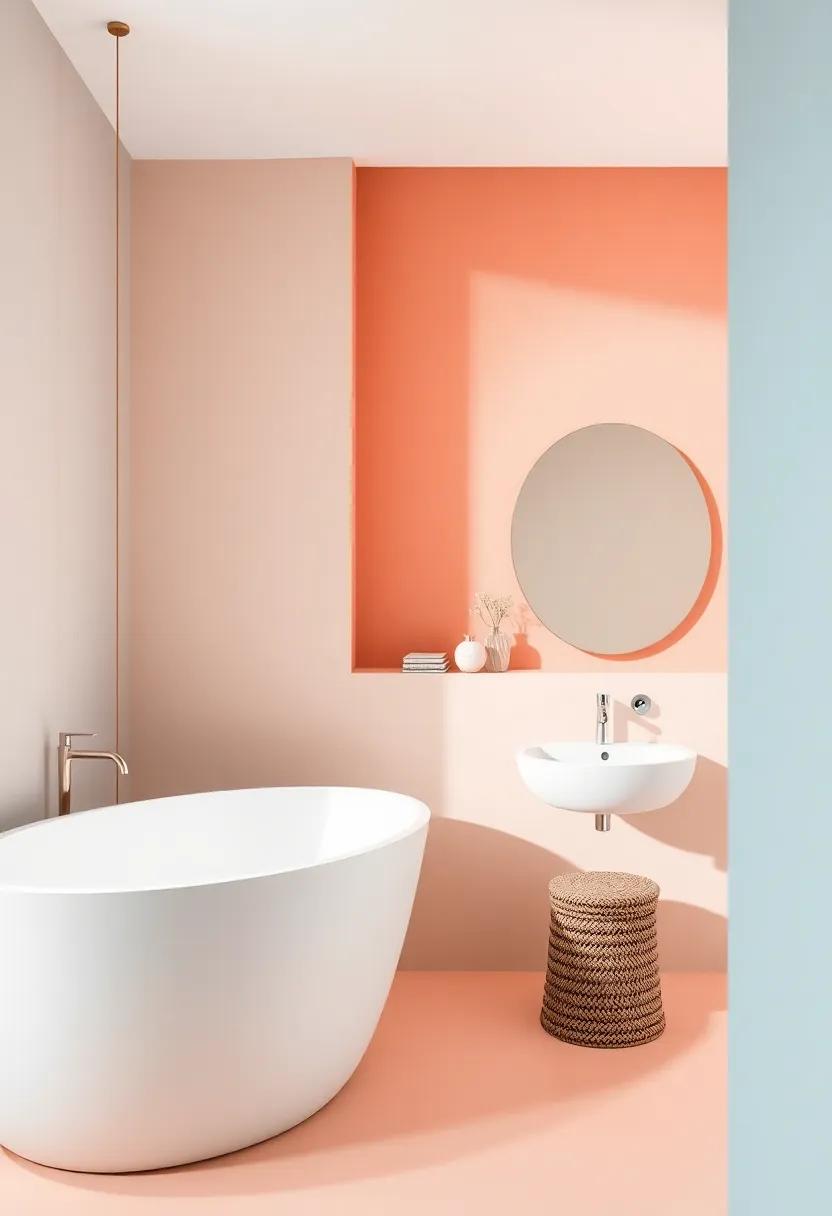
Color selection can be a transformative element in bathroom design, allowing for a blend of functionality and style. Current trends spotlight soft pastels, deep jewel tones, and earthy neutrals that create a soothing environment. These hues not only elevate aesthetics but also influence mood and perception of space. To stay ahead, consider incorporating color in the following ways:
- Accent Walls: A bold hue can add depth without overwhelming the space.
- Tiles: Explore vibrant patterns or bright colors to act as a focal point.
- Accessories: Small items like towels, soaps, or artwork can incorporate trending colors easily.
As the bathroom becomes a sanctuary for relaxation, exploring the impact of light and shadow on color plays a vital role. As a notable example, using light colors can definitely help smaller spaces feel larger and airier, while darker shades can create a cozy, intimate atmosphere. Here’s a simple table to illustrate color choices against their corresponding effects:
| Color | Effect |
|---|---|
| Soft Blue | Calming and serene |
| Forest Green | Grounding and nature-inspired |
| bright Coral | Energetic and vibrant |
Cultural Influences: Exploring Color Choices from Around the World
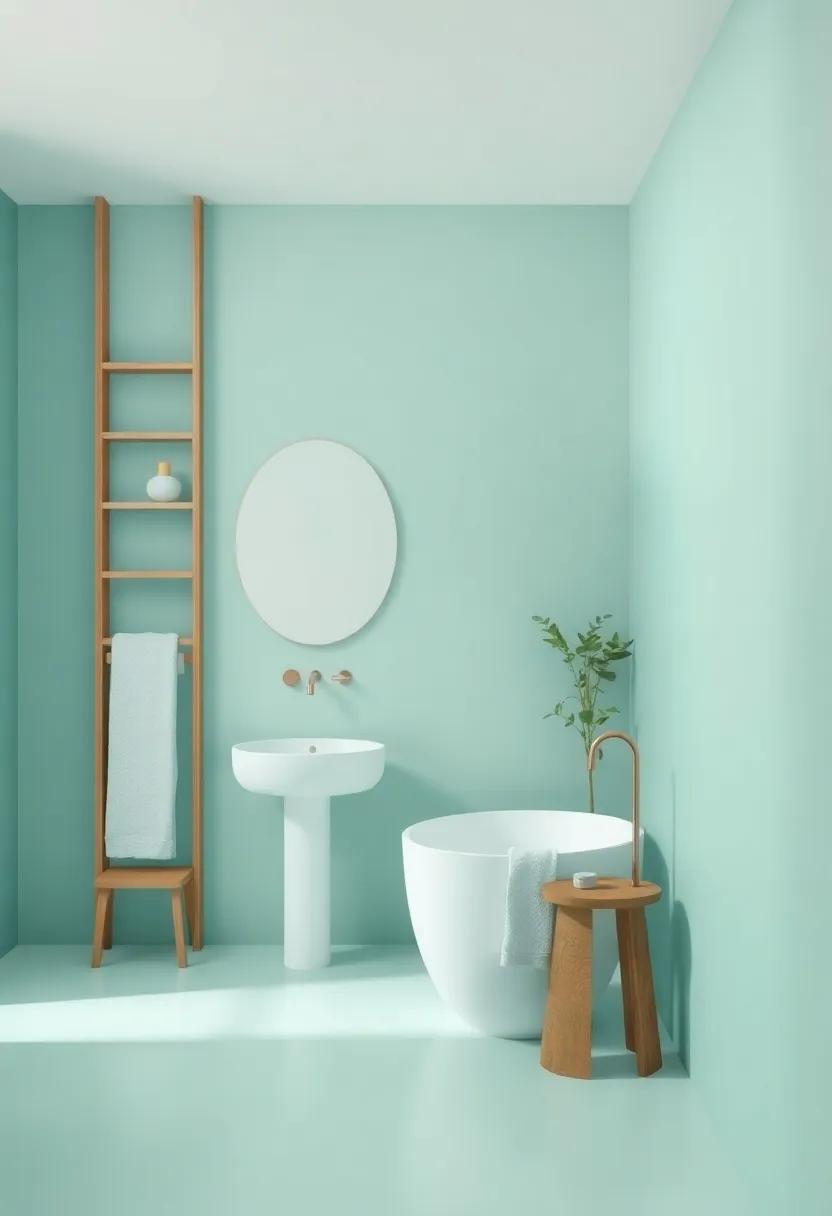
Color is more than just a design choice; it carries significant cultural weight that influences how we perceive and interact with our spaces. In the context of bathroom design,color choices can evoke a range of emotions and responses,from tranquility to vibrancy. For example, in Japanese culture, soft shades of blue and green are favored, reflecting the serenity of nature and promoting relaxation, making them perfect for a calming bathroom environment.In contrast, Mexico embraces bright, bold colors like fiery reds and sunny yellows, which can create an invigorating atmosphere that energizes the spirit when one enters the space.
Understanding the psychological and emotional impact of color can help you curate a bathroom that resonates with your personal style while acknowledging global influences. Here are some culturally inspired color choices to consider:
- Turquoise – A refreshing color frequently enough associated with Mediterranean cultures, reflecting clarity and calm.
- Earthy Tones – Inspired by African art, these colors bring warmth and organic vibes into the space.
- Pastels - Common in Scandinavian design, offering a clean, minimalistic aesthetic that promotes simplicity and function.
Exploring these diverse palettes can transform your bathroom into a personal sanctuary that feels both intimate and inspired by the richness of global traditions. Embrace these cultural insights, and allow your bathroom to tell a story through its colors.
The Use of Metallics: Adding Glamour and Depth With Color Accents
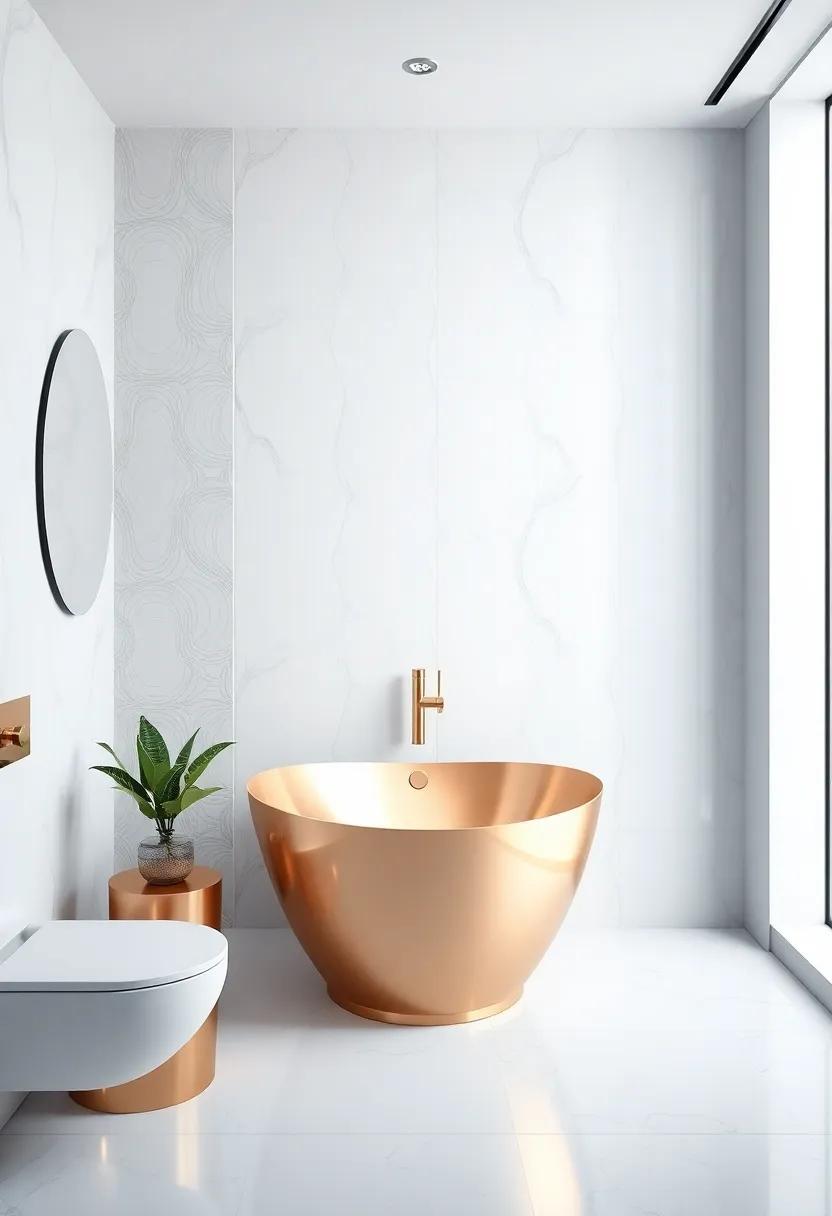
Incorporating metallic elements into bathroom design not only enhances the aesthetic appeal but also brings a certain sophistication that can transform the entire space. Gold, silver, and copper accents can be strategically used to create a luxurious environment.Consider the following key applications for metallics:
- Faucets and Fixtures: Opt for brass or brushed nickel finishes to add a touch of opulence to sinks and showers.
- Mirror Frames: A gilded or metallic-framed mirror can serve as a stunning focal point while reflecting light to make the room feel larger.
- Accessories: Incorporate metallic trays, candle holders, or vases for subtle highlights throughout the space.
Beyond mere decoration, metallics also interact beautifully with different colors, helping to create depth and dimension. To make the most of color accents,consider the following combinations:
| Color | Metallic Pairing | Effect |
|---|---|---|
| Deep Blue | Brushed Gold | Elegant and calming |
| soft Blush | Rose Gold | Warm and inviting |
| Charcoal Gray | Silver | Modern and chic |
Utilizing these combinations can significantly uplift your bathroom’s look,allowing for a personalized style that resonates with your vision. Experimenting with metallics not only makes a bold statement but also ensures that your bathroom remains a serene sanctuary infused with glamour.
Bold patterns: unleashing Creativity with Colorful Tiles and wallpaper
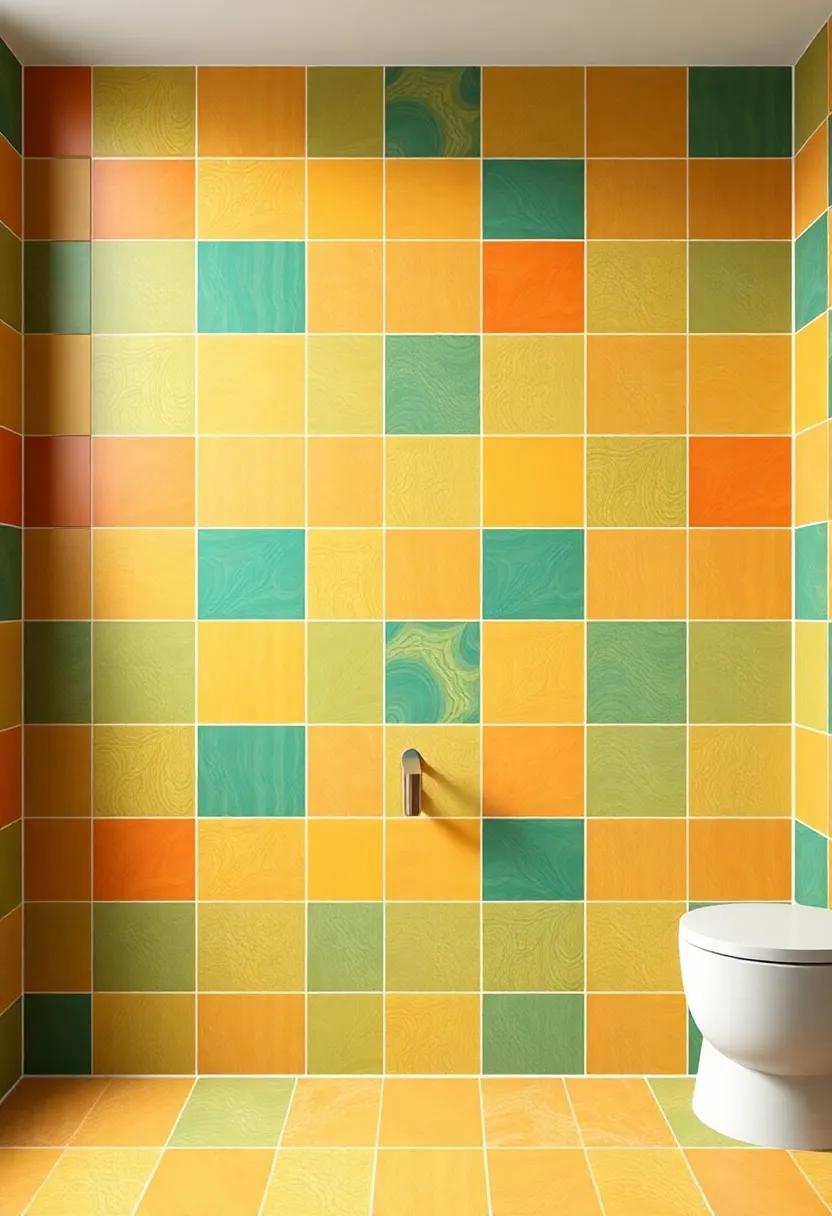
Incorporating bold patterns into your bathroom design can transform an ordinary space into a striking oasis of creativity. The dynamic interplay between colorful tiles and vibrant wallpaper allows for personal expression and can wholly redefine the mood of the room. Consider utilizing geometric shapes or floral motifs; both can create a stunning backdrop that complements fixtures and accessories,elevating the aesthetic appeal. Here are a few inspiring ideas to get you started:
- mix and Match: Combine different patterns in a cohesive color palette.
- Accent Walls: Use bold wallpaper on one wall for a dramatic focal point.
- Tile Borders: Frame sections of your wall or floor with contrasting tiles to add depth.
When it comes to patterns, the choice can greatly influence the perception of space. Light colors and small patterns can make a room feel larger, while darker hues and intricate designs can add warmth and intimacy. To help visualize your options, here’s a simple table comparing various styles:
| Style | Characteristics | Effect |
|---|---|---|
| Geometric Tiles | Modern, sharp angles | Creates a contemporary look |
| Floral Wallpaper | Soft, organic shapes | Brings a natural vibe |
| Striped Patterns | Vertical or horizontal lines | enhances visual height/width |
Creating Depth: utilizing Dark Colors to Highlight Space Features
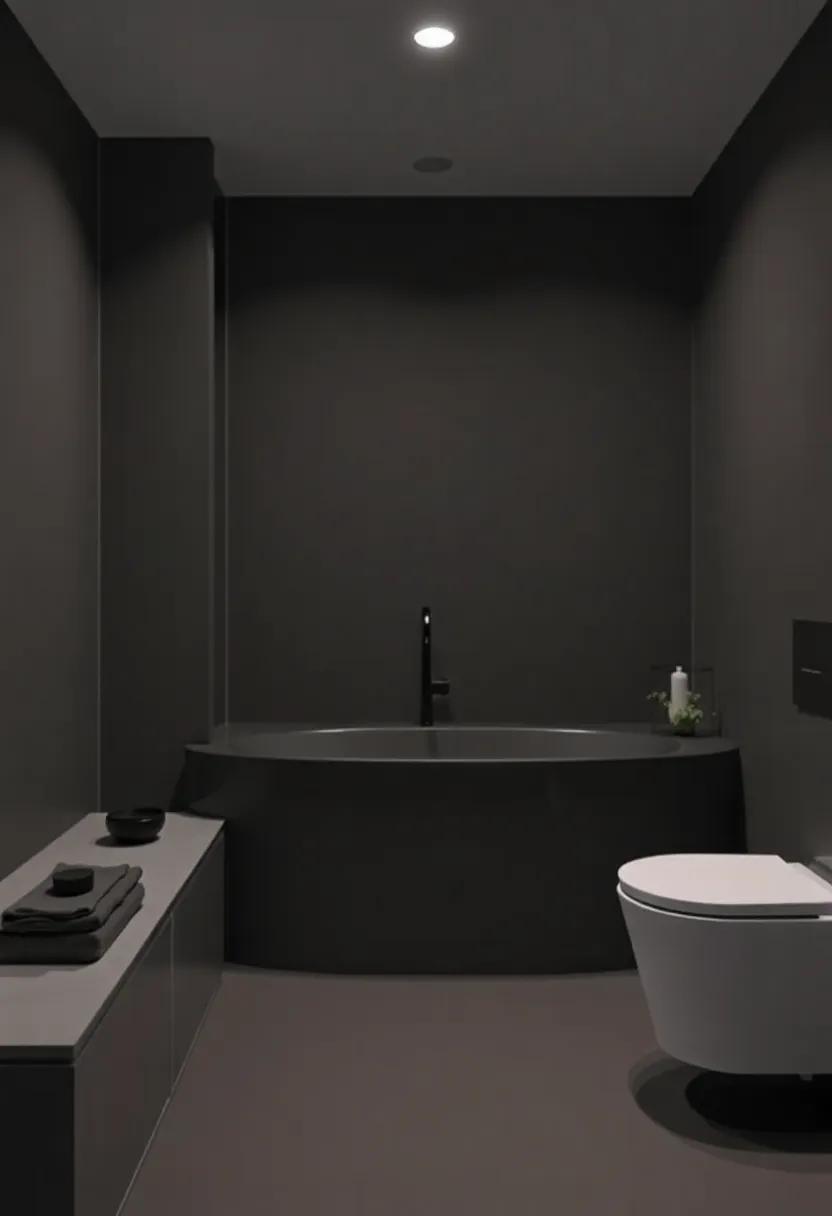
Incorporating dark colors into your bathroom design can create a striking contrast with other elements in the space,accentuating features that might or else go unnoticed. Using deep hues like navy, charcoal, or rich forest green not only adds a sense of sophistication but also establishes a cozy atmosphere. To effectively utilize these shades, consider the following approaches:
- Accent Walls: Choose one wall to paint in a dark color, allowing it to serve as a dramatic backdrop for lighter fixtures and decor elements.
- Cabinetry: Dark cabinetry can enhance the overall elegance of the room, providing a sleek modern touch.
- Tile Selection: Use darker tiles in the shower or on the floor to ground the space while making the lighter components pop.
Pairing these dark tones with reflective surfaces can amplify the light within the room, creating an intriguing interplay between shadow and illumination. Consider combining a matte dark surface with elements like polished chrome or glossy tile to draw the eye and highlight unique architectural features. The following table illustrates effective combinations that can help you create that immersive yet spacious feel:
| Color Combination | Effect |
|---|---|
| Charcoal & Gold Accents | Rich and luxurious |
| Navy & White Marble | Classic and timeless |
| Deep Green & Light Wood | natural and calming |
Personal Expression: Infusing your Personality Through Color Selection
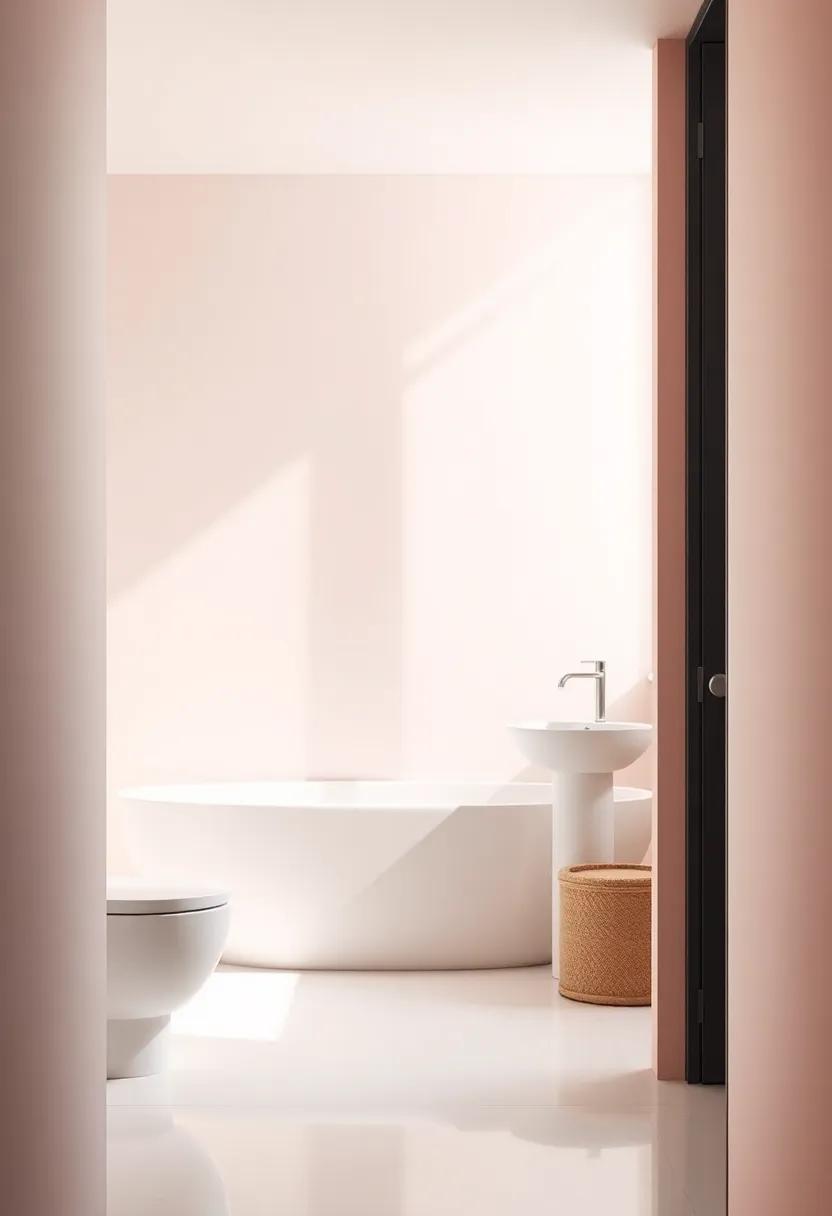
When it comes to designing your bathroom, color selection is not merely a matter of aesthetics; it is a vibrant expression of your individuality. Choosing hues that resonate with your personality can transform your space into a sanctuary that feels uniquely yours. For a calming retreat, consider soft blues and greens, which mirror the tranquility of nature. Alternatively, bold and vibrant shades like fiery reds or sunny yellows can inject energy and creativity into your bathroom, making it a lively space where you can start or end your day on a high note.
To help visualize your vision, think about the following tips when selecting colors that reflect your essence:
- Consider Your Mood: Different colors evoke distinct feelings; choose hues that promote the ambiance you desire.
- Mix and Match: Don’t be afraid to combine complementary colors to create a layered look that speaks to your style.
- Accents Matter: Use bold accents in fixtures or decor to complement softer wall colors, creating a dynamic contrast.
| Color | Effect | Best Used In |
|---|---|---|
| Blue | Calm and tranquil | Small spaces or for a spa-like feel |
| Yellow | cheerful and Inviting | Family bathrooms or playful spaces |
| Gray | Modern and Elegant | contemporary designs |
| Pink | Warm and Feminine | Guest bathrooms or for a soft touch |
The Impact of Color Psychology: Choosing Hues That Empower and Inspire
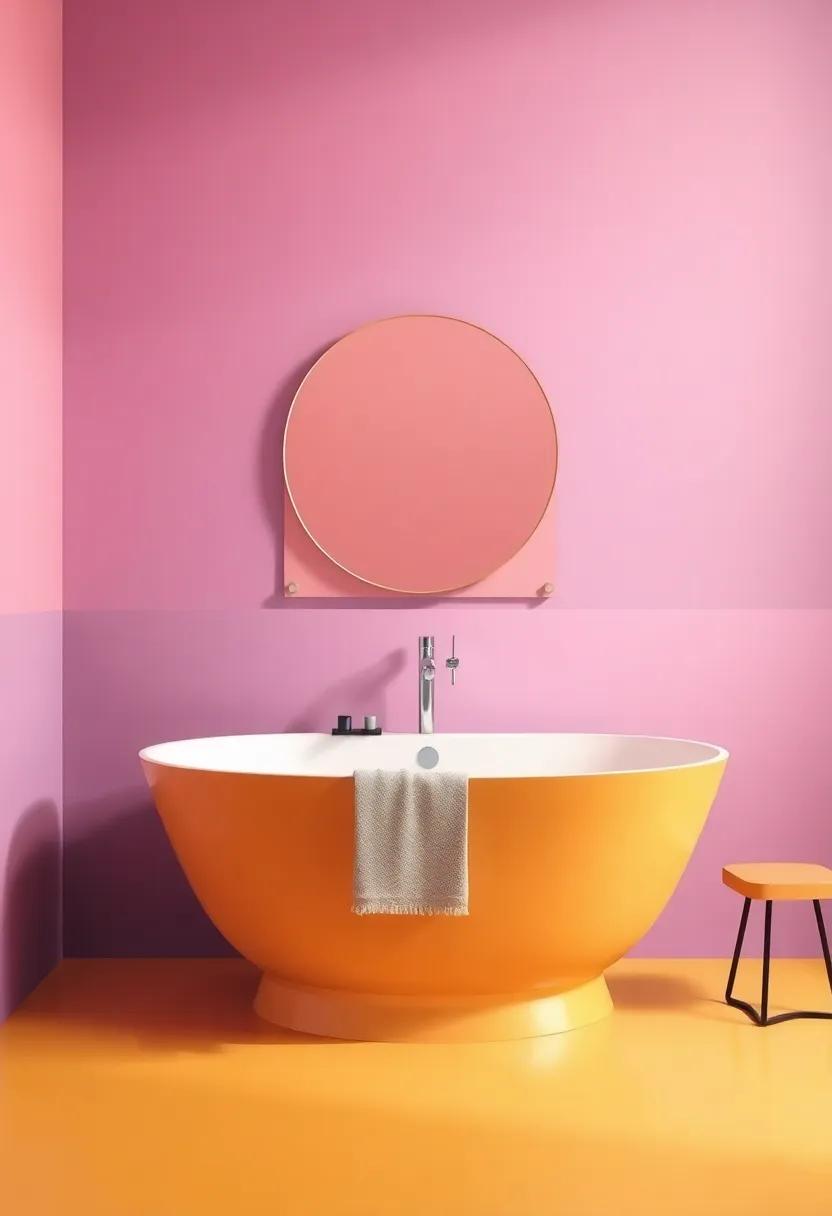
Understanding color psychology is essential when creating a bathroom space that not only meets functional needs but also evokes the desired emotional response. Colors have a profound effect on our mood and behavior, transforming an ordinary room into a sanctuary. As a notable example, calming shades of blue and green are frequently enough associated with tranquility and serenity, making them perfect for a relaxing bath environment. In contrast, vibrant colors like yellow and orange can energize the space, infusing it with warmth and cheerfulness, ideal for a morning routine that sets a positive tone for the day.
When selecting hues for your bathroom, consider the overall vibe you wish to encapsulate. Here are some colors and their potential effects:
- Soft Neutrals: Create a timeless backdrop, promoting calmness and versatility.
- Deep Blues: Encourage relaxation, reminiscent of deep waters.
- Earthy Tones: Ground the space, offering a connection to nature.
- Pastel Shades: Add a playful touch, making the bathroom feel cozy and inviting.
Combining colors thoughtfully can amplify their individual effects. Such as, a harmonious blend of blues and greens could inspire a spa-like atmosphere, while infusing splashes of coral or soft peach can add vibrancy without overwhelming the senses. To effectively visualize these combinations, consider utilizing a color palette table that captures the interaction between various shades:
| Color | Emotional Impact | Best Combinations |
|---|---|---|
| Soft Grey | Calm, Neutral | White, Pastel Blue |
| Seafoam Green | Tranquility, Balance | Sand, Light Coral |
| Warm Beige | Cozy, Inviting | Burnt Orange, Deep Brown |
Mixing Styles: Combining Vintage and Modern Colors for unique Designs
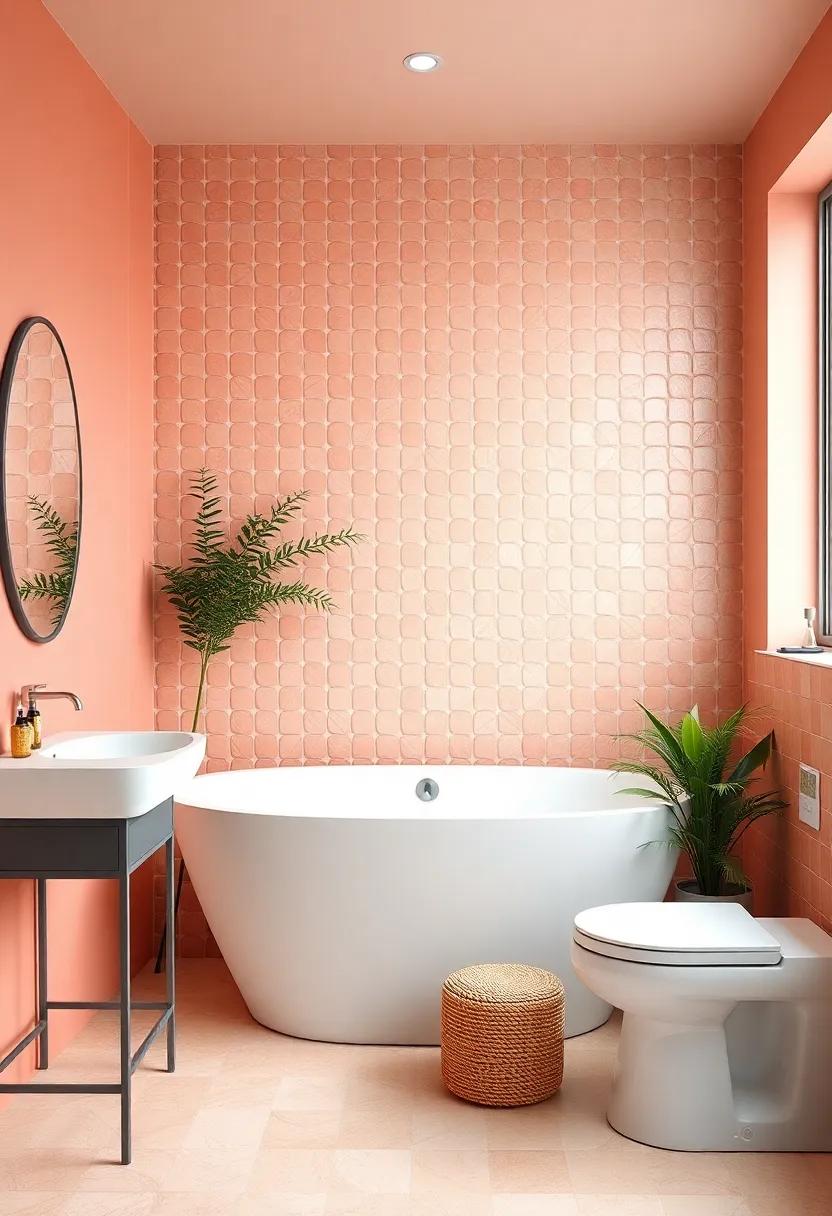
When it comes to creating a unique bathroom design, mixing vintage and modern color palettes can breathe new life into your space. Consider incorporating soft pastel hues alongside bold jewel tones to achieve a striking balance. As an example, a muted mint green can pair beautifully with deep navy accents, making the room feel both refreshing and grounded. Utilize patterns that reflect the elegance of the past—like hexagonal tiles or floral motifs—while adopting a contemporary twist through glossy finishes or geometric designs. This fusion can result in a bathroom that feels timeless yet current, inviting warmth and personality.
Another effective approach is to layer textures that resonate with both eras,enhancing depth in your color scheme. Think about integrating natural materials like reclaimed wood or stone that highlight the warm tones of vintage décor alongside sleek, modern fixtures in chrome or matte black. Choose a color scheme based on three main tones for visual coherence, which can include:
| Vintage Color | Modern Color | Continuous Tone |
|---|---|---|
| Soft Lavender | Bright white | Pearly Gray |
| Dusty Rose | Charcoal | Warm Beige |
| Seafoam Green | Bold Teal | Creamy Off-White |
By carefully selecting shades from different periods, not only can you create a distinct visual narrative in your bathroom, but you can also evoke emotions that resonate with both nostalgia and contemporary style. The key is to ensure that your chosen colors harmonize rather than clash, using accessories or art pieces to tie everything together seamlessly.
Focal Points: Using Color to Draw Attention to Special Bathroom Features
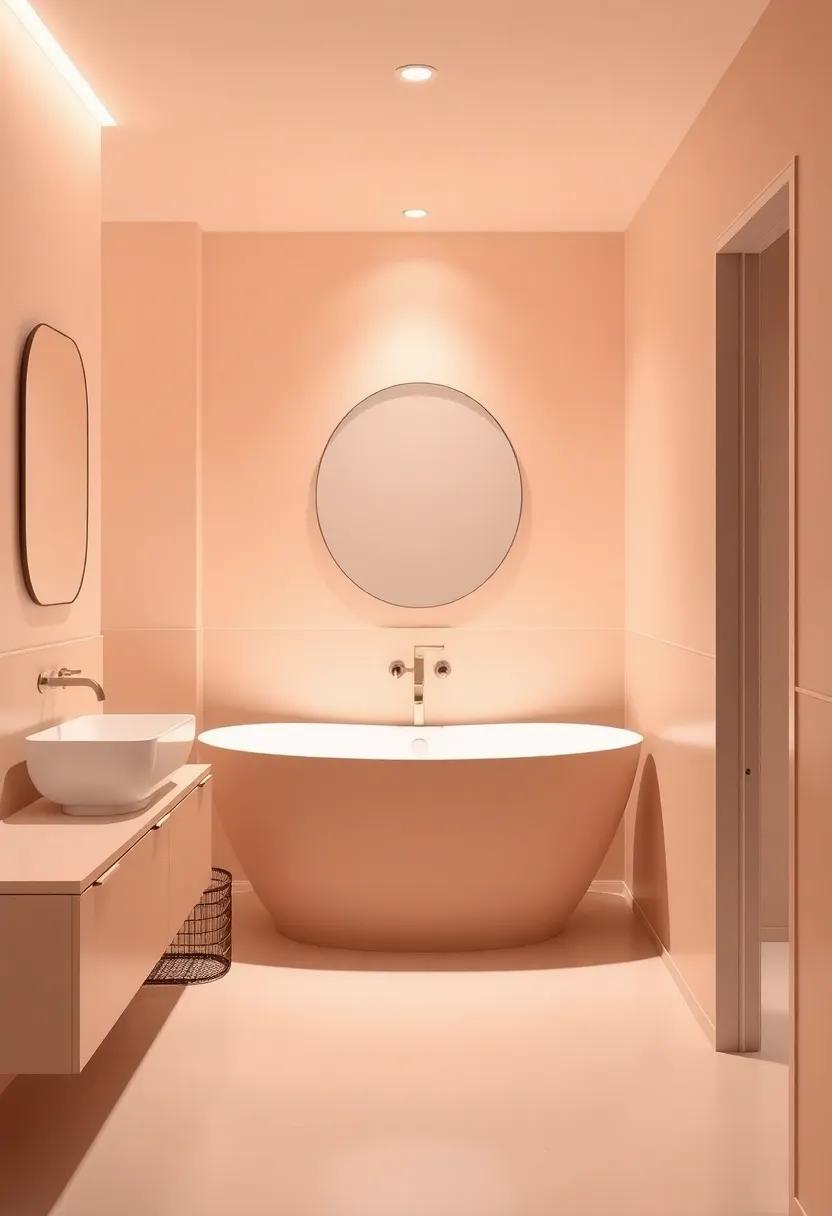
In the realm of bathroom design, color serves as a powerful tool to accentuate special features, transforming an ordinary space into a sanctuary of style and relaxation. By strategically choosing hues, you can create a focal point that draws the eye and enhances the overall aesthetic. Consider highlighting elements such as:
- Accent Walls: A bold tile or painted wall behind a freestanding tub can create an inviting atmosphere.
- Vanity Selections: A brightly colored vanity can serve as a centerpiece, breaking the monotony of neutral shades.
- Fixtures and Accessories: Oddly colored faucets or cabinet hardware can add a modern twist.
To further emphasize these distinctive features, using contrasting shades is key.Such as, if your bathroom boasts a serene palette of soft whites and grays, introducing a deep blue or emerald green for accents can provide a dramatic effect. Here’s a simple table that outlines some effective color pairings:
| Base Color | accent Color |
|---|---|
| Soft White | Charcoal Gray |
| Pale Blue | Copper |
| Light Beige | Forest Green |
| Muted Pastel | rich Plum |
Ultimately, incorporating color deliberately will not only add vibrancy to your bathroom but also imbue it with character. By focusing on unique design elements, you can elevate your space and create an inviting, personalized retreat.
Shimmer and Shine: How Glossy Colors Can Elevate Your Bathroom Aesthetic
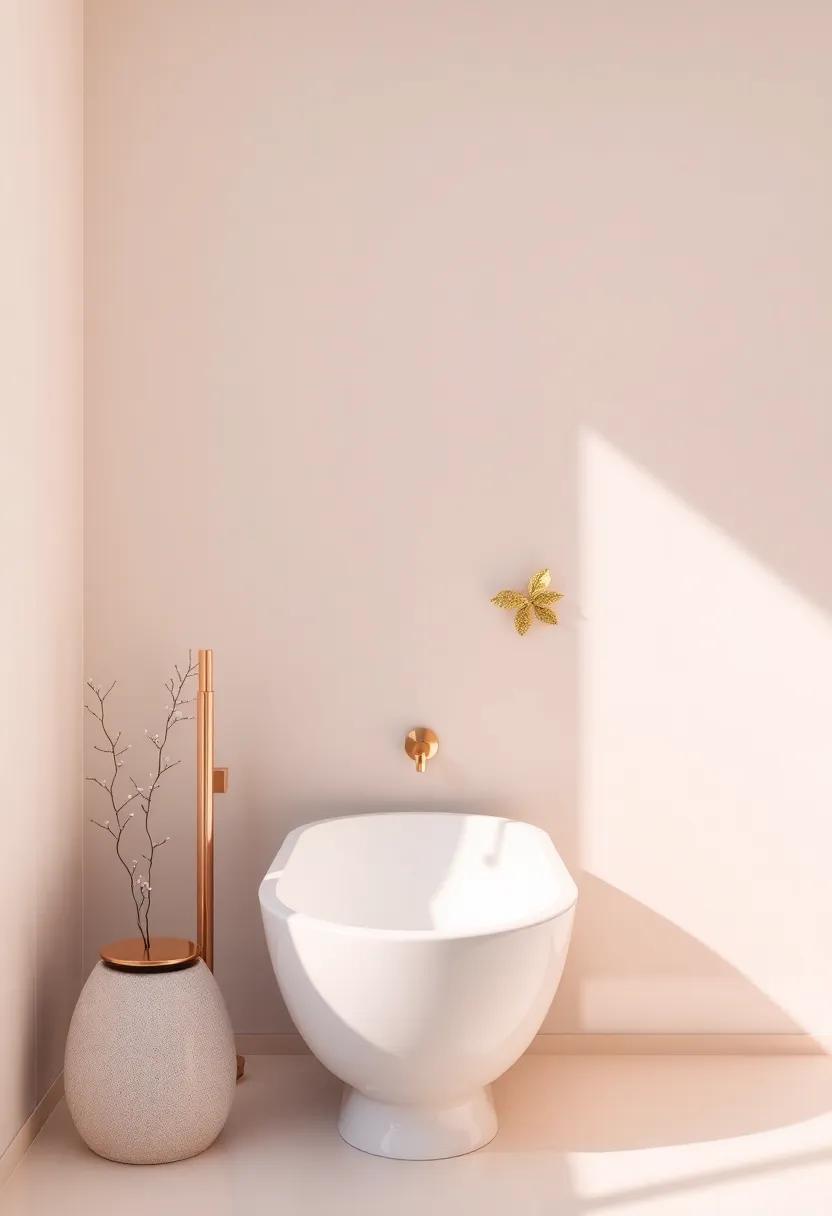
When it comes to bathroom design, color choice can dramatically influence the overall ambiance and aesthetic.Opting for glossy tones can bring a sense of vibrancy and modernity to an otherwise mundane space. Shimmering hues like deep ocean blues, radiant emerald greens, or lustrous golds can create an eye-catching effect, reflecting light and making the room feel larger and more inviting. These glossy colors not only add depth but also enhance the elegance of fixtures and fittings, resulting in a cohesive look that is both refreshing and luxurious.
To fully embrace the potential of glossy colors in your bathroom, consider incorporating them through various elements. Here are a few suggestions to inspire your design:
- Tiles: Use glossy ceramic or glass tiles for backsplashes or flooring.
- Vanities: Choose cabinets with a high-gloss finish to elevate traditional wood designs.
- Accents: Explore glossy paint for walls or decorative features, such as mirrors and light fixtures.
Pairing these glossy colors can create a tranquil yet sophisticated atmosphere. As an example,a table comparing potential glossy color pairings could look like this:
| Color | Complementary Tone |
|---|---|
| Ocean Blue | Soft White |
| Emerald Green | Warm Beige |
| Shiny Gold | Rich Navy |
By selecting the right glossy tones and their complementary colors,you can curate a bathroom space that reflects your personality while exuding a polished and refined aesthetic.
Soft Lighting: Enhancing Color Palettes for Ultimate Relaxation
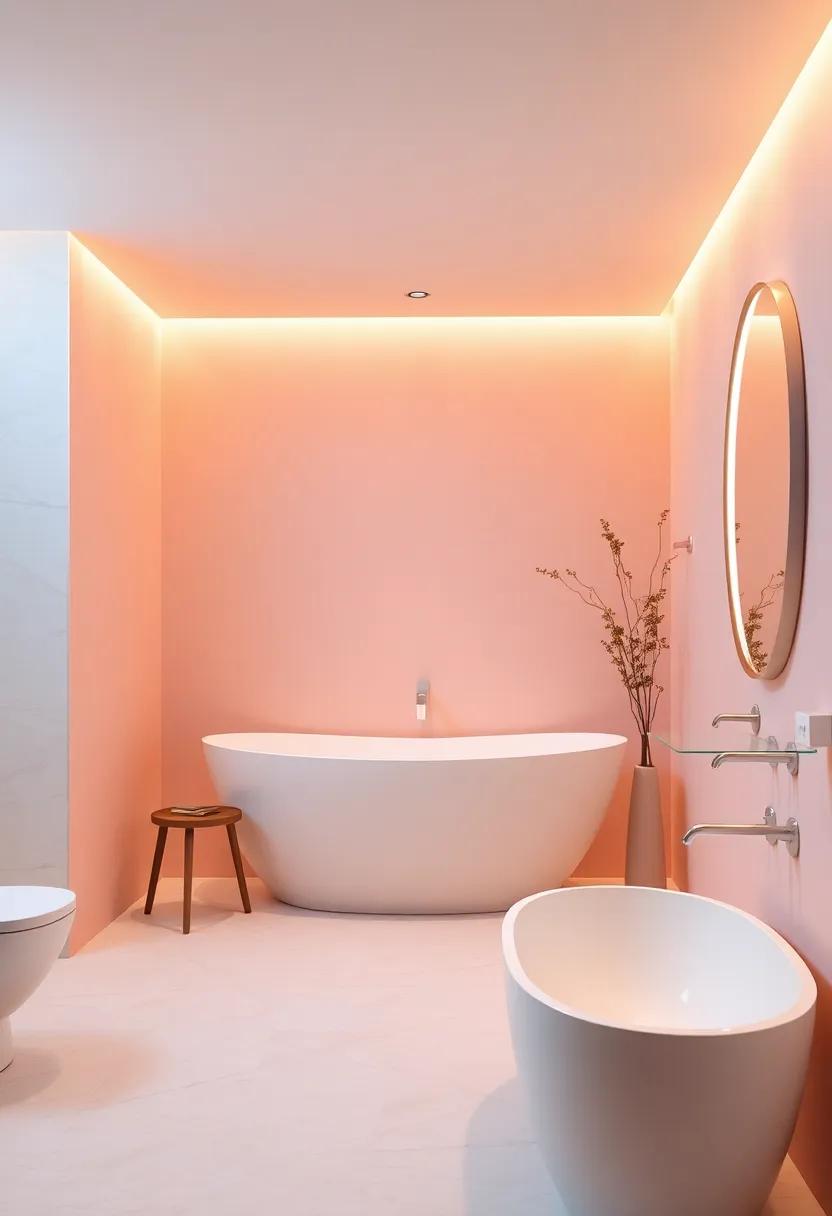
In the quest for tranquility within your bathroom, soft lighting plays a transformative role, accentuating color palettes and creating an atmosphere of calm. By utilizing warm, diffuse light sources, you can enhance the subtle hues of paint and textiles, allowing them to interact harmoniously. Consider the following ideas for your lighting design:
- Warm White Bulbs: Opt for bulbs with a color temperature between 2700K to 3000K to mimic natural sunlight, promoting a serene environment.
- Layered Lighting: Combine ambient, task, and accent lighting to add depth and versatility to your color scheme.
- Dimmers: Install dimmers to adjust brightness according to your mood, enhancing relaxation.
the interplay of soft lighting with your chosen colors produces a visual symphony that invites relaxation. For instance, soft blues and greens can become more soothing under muted lights, while neutral tones can feel cozier. A well-planned color and lighting strategy invites you to create a personal sanctuary. Here’s a simple breakdown of color effects amplified by lighting:
| Color | Effect in Soft Lighting |
|---|---|
| Soft blue | Promotes calmness and serenity. |
| Warm Beige | Creates an inviting and cozy space. |
| Muted Green | Enhances a connection with nature, providing freshness. |
| Pale Lavender | Conveys a sense of luxury and relaxation. |
Iconic Color Pairings: Exploring Classic Combinations for Timeless Appeal
![]()
When it comes to bathroom design,the right color combinations can breathe life into your space and evoke an inviting atmosphere. Consider pairing soft neutrals with vibrant hues for a stunning contrast that doesn’t overpower the senses. Some classic pairings include:
- Soft grey and deep navy: A perfect duo that creates a calm, spa-like environment.
- Muted mint and coral: A fresh combination that brings a playful energy to your space.
- Crisp white and warm wood tones: This timeless pairing adds an element of rustic charm, ideal for creating a serene sanctuary.
Another effective approach is to utilize monochromatic schemes that play with different shades and tones within a single color.This method can elevate your design aesthetic while ensuring a harmonious look. Such as, pairing various shades of blue can create a tranquil ocean-inspired retreat. Here’s a simple guide to monochromatic styles:
| Color | Shade 1 | Shade 2 | Shade 3 |
|---|---|---|---|
| Blue | Sky Blue | Cerulean | Navy |
| Green | Mint green | Emerald | Forest Green |
| Grey | Light Grey | Steel Grey | Charcoal |
Functional Colors: marrying Aesthetic Preference With Practicality in Design
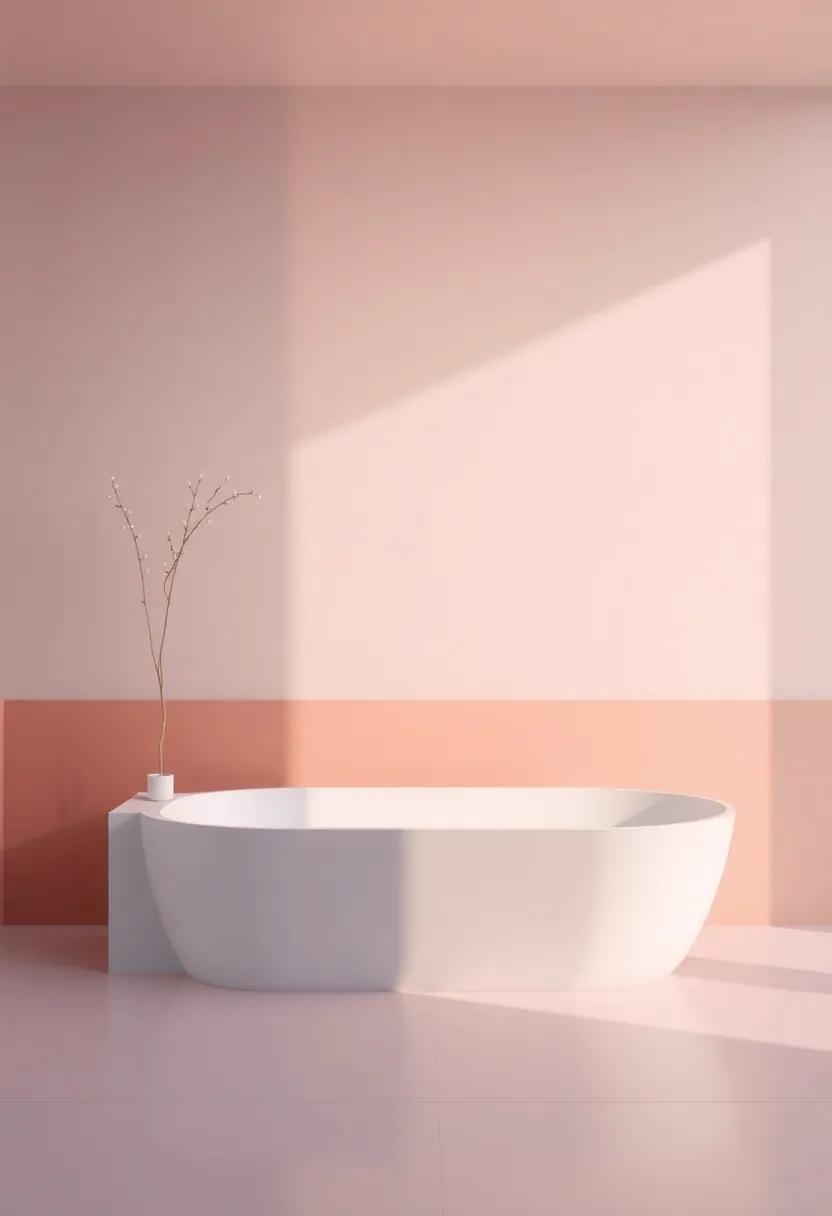
Incorporating functional colors into bathroom design is not merely about aesthetics; it also considers the psychological effects and practical uses of shades. As an example, soft blues and greens evoke a serene atmosphere, promoting relaxation and making the bathroom a personal sanctuary. On the contrary,vibrant colors like yellows and oranges can energize the space but may benefit from careful submission to avoid overwhelming the senses. By blending hues that reflect personal tastes with those that enhance the functionality of the space, homeowners can create a balance that is both beautiful and purposeful.
To illustrate the effectiveness of choosing the right colors, here’s a simple breakdown of popular color palettes and their associated qualities:
| Color Palette | Psychological Impact | Practical Considerations |
|---|---|---|
| Soft Neutrals | Calming, Timeless | Easy to match with fixtures |
| Bold Accent Colors | Invigorating, Dynamic | Great for small features or decor |
| Earthy Tones | Grounding, Cozy | Good with natural materials |
| Pale Pastels | Light, Airy | Expands visual space, ideal for small bathrooms |
Additionally, it’s essential to consider the practical elements of color selection, such as maintenance and durability. Darker shades may hide stains better, but could require more frequent cleaning due to the visibility of dust or water spots. Light colors can create the illusion of a larger space but might necessitate more vigilance in upkeep.By thoughtfully marrying aesthetic preferences with these practicalities, a bathroom can not only be visually appealing but also remain functional and easy to maintain.
Future Outlook
In the world of interior design, the bathroom frequently enough holds a unique position—as a personal sanctuary where color can evoke tranquility, vibrancy, or even a touch of drama. As we’ve explored the profound impact of color in bathroom design, it becomes evident that every hue carries its own story; from calming blues and greens that mimic nature’s embrace, to bold yellows and reds that invigorate the spirit. Your choice of color not only defines the aesthetic but also influences the mood and functionality of the space.
As you embark on the journey of transforming your bathroom, remember that color is a powerful tool—one that, when wielded wisely, can elevate your everyday experiences. Whether you’re opting for timeless neutrals, playful pastels, or daring contrasts, let your creativity flow and reflect your personal style in every brushstroke and tile.
Ultimately, the bathroom is more than just a functional space; it’s a canvas for your creativity.So go ahead, embrace the spectrum of possibilities, and transform your space into a haven that resonates with your essence. Your perfect retreat awaits, ready to be brought to life with the simple yet profound magic of color.
As an Amazon Associate I earn from qualifying purchases.
